The 100 Best Movies of the 2010s
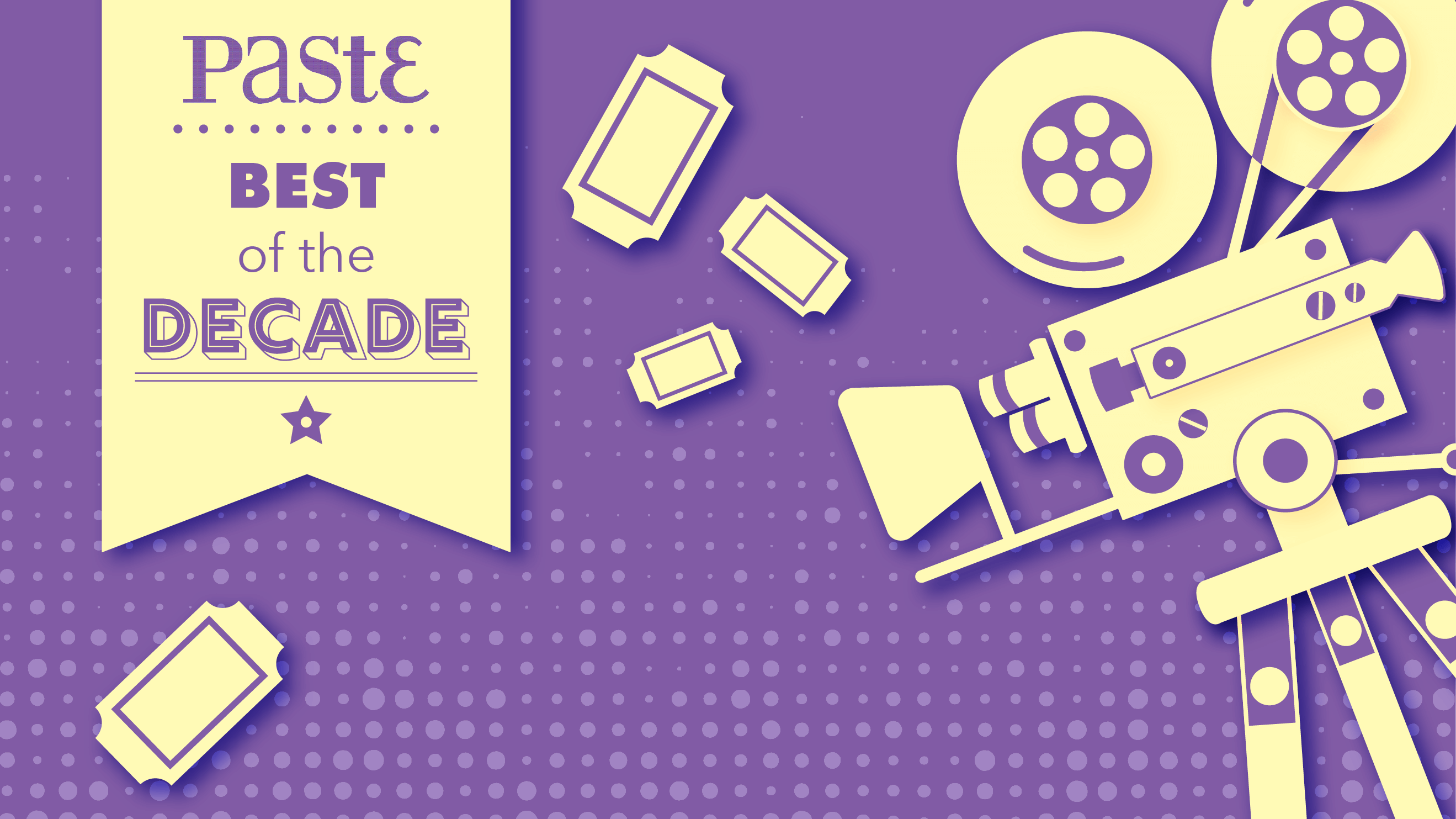
As we’ve finally collected the best movies of the 2010s, there are two movies by Martin Scorsese on this list, and five Marvel movies. Let us demarcate the next decade by refusing to ever stop talking about this.
But, hey, here we are: our staff’s favorite 100 movies released between 2010 and now. There’s a lot of the familiar and a lot of the divisive and a small bit of the esoteric, but in its weird breadth this list is the best we could do to cover so much, from our writers’ taste to our best guess for which films will have a lasting effect on whatever post-apocalyptic hellscape is to come as direct result of this moment’s war between Scorsese and the MCU.
In that spirit, we had to leave a bunch of films out, make some serious compromises to get other titles in. John Wick is here, representative of all three chapters; Blade Runner 2049 can stand in well enough for Arrival’s scope; The Beach Bum is the humanist opus in conversation with what Spring Breakers promised; Coco is the best of what kind of magic Pixar’s conjured all decade; Annihilation wraps Ex Machina in its warm embrace, and absorbs it. Or, at least that’s how we reasoned our way to the following 100.
And make sure to check out more of our Decade’s Best lists, dutifully analyzing how closely we stayed consistent throughout:
The 30 Best Documentaries of the 2010s
The Best Horror Movies of the 2010s
The Best Anime Movies of the 2010s
The Best Bollywood Movies of the 2010s
The Best Sci-Fi Movies of the 2010s
Here are the 100 best movies of the 2010s:
100. The Bling Ring (2013)
Director: Sofia Coppola

Director Sofia Coppola and journalist Nancy Jo Sales are not entirely worlds apart. Coppola has evolved, through films like The Virgin Suicides and Lost in Translation, to become an astute examiner of middle class white femininity on film, while Sales, with a long history of featured reporting in Vanity Fair and the book American Girls: Social Media and the Secret Lives of Teenagers, is one of the foremost experts on (primarily) middle class white teenage girls (and also the internet and modern sexual culture). But The Bling Ring, directed by Coppola and based on Sales’ 2010 Vanity Fair article “The Suspects Wore Louboutins,” shows that their basic similarities stop there. Though both women have an anthropological eye on the same demographic, Coppola extends to the subjects of her film what Sales rarely has time for: empathy.
Sure, privileged LA brats are maybe least worthy of our sympathy, but Coppola and cinematographers Christopher Blauvelt and Harris Savides present an observational documentation of (dramatized) events—chronicling the robbery of several stars’ houses (including Paris Hilton’s) by rich teens—without the condescending armchair psychoanalysis that might be easy to fall into. By reserving judgment of these characters (played by the likes of Emma Watson, Israel Broussard, Katie Chang and Taissa Farmiga), Coppola allows their ties to capitalism, their inheritance of a certain economic and social paradigm passed down from their negligent and narcissistic parents, to emerge naturally as she observes the intrinsic relationship between consumerism and identity. Coppola has made an impressive film extrapolating what it might mean to be the “millennial generation,” and shouldn’t worry about receiving any phone calls from sobbing teens correcting her on what shoes were worn to court. —Kyle Turner
99. Thor: Ragnarok (2017)
Director: Taika Waititi

Like the Guardians of the Galaxy films, which are the closest non-Thor MCU cousins in tone and spirit to the third installment in the God of Thunder’s personal series, Thor: Ragnarok opens with a lively prologue/set piece involving its protagonist, Thor-ing like a boss, accompanied by a rockin’ tune. It’s a great nod to all the comic book fans jonesin’ to see Thor using Mjolnir, his trusty hammer, to just all-out wreck those who oppose him. From there, Waititi keeps the pace swift, resolving a few plot cliffhangers, throwing down an extended cameo, introducing this film’s big bad in Hela (a dependably enjoyable Cate Blanchett), propelling Thor (and Loki) to their next stop on the “it’s a big universe” express, meeting new faces (Jeff Goldblum’s Grandmaster and Tessa Thompson’s Valkyrie foremost among them), reuniting with everyone’s favorite green-thewed god-pummeler before bringing it all back for the big finale in Asgard. The result? One of those two-hour-plus films that you’ll swear was half that. Waititi seems to delight in exploring the interplay between Chris Hemsworth’s physical and comic presence; it’s yielded a version of Thor that might annoy some comic book purists (but certainly didn’t this one), but has revitalized both his franchise and the whole cinematic universe. —Michael Burgin
98. A Field in England (2013)
Director: Ben Wheatley
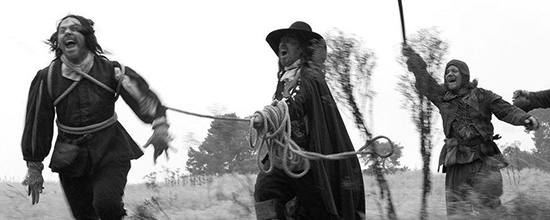
In the 17th century, amidst the buffered explosions and death rattles of the English Civil War—that always seems just over the ridge—three men meet a fourth who feeds them psychotropic mushrooms and then herds them to a fifth, who forces them to search for buried treasure in the middle of A Field in England. Co-written with partner Amy Jump, Ben Wheatley’s fourth film fails the Bechdel Test so tremendously it practically suffers Ego Death, obliterating all barriers—physical and temporal and whatever else—to be as much about the relentlessly stupid nature of masculine power dynamics as it is about the experience of losing oneself within the sensation of total loss. In an otherwise incoherent tale of men abusing men, Wheatley strips back elemental layer after layer, revealing emptiness within emptiness. Story, logic, none of it seems to matter, nothing matters, everything is mutable and transigent and malcontent—except for a hair of sympathy threaded through everything, the sense that were all of these men to give up on each other entirely, whatever’s going on would spin out beyond all recognition. And so, a man called Whitehead (Reece Shearsmith) offers to inspect the genital warts (which we get to inspect too!) of his new vagabond friend Trower (Julian Barratt), out of the kindness of Whitehead’s heart, while a man called Friend (Richard Glover), upon his death, confesses his love for his wife’s sister, describing the manner in which they had sex to his recently close companions with unexpected, moving intimacy. Skirting the madness, Blanck Mass’s score sweeps from baroque ditties to vast and sparkling soundscapes, especially arresting for how strangely Wheatley uses them, willing to show the characters in his film how easily, how meaninglessly, he can bend the world around them to his pointless will. A man on a leash running out of a tent in slow-motion? Is that a Waiting for Godot reference? Mesmerized for mesmerization’s sake, one weeps at the beauty. —Dom Sinacola
97. Attenberg (2010)
Director: Athina Rachel Tsangari
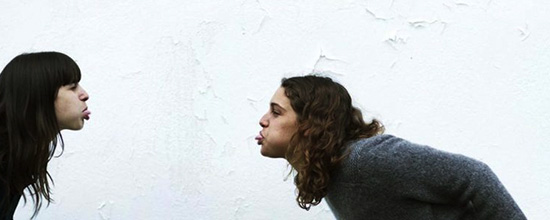
Coming-of-age drama as weird nature documentary, Athina Tachel Tsangari’s Attenberg observes the social and sexual awakening of Greek woman Marina (Ariane Labed) as a series of increasingly intimate, obliquely odd physical rituals. Literally: Marina bonds with her only friend Bella (Evangelia Randou) through synchronized dance, moves typically mired in genital-grabbing and blowing raspberries and skipping in lock step, their routines resembling schoolyard rhymes or practiced choreography or kids playing doctor—Tsangari never clarifies, though Marina translates so much of her uncontrollable feelings through the habits and behavior of the animals she obsessively watches on the Discovery channel. Like showtunes, the movements spring fully formed and practiced from the friends’ mutual ether. Which helps, because otherwise Marina can’t stand affection, finds human bodies repulsive, slimy, twitching things—big wide, dripping unknowns. She’s content sharing a modest home with her terminally ill dad (Vangelis Mourikis) and working at the steel mill and wading in the liminal space between one’s teen years and one’s elder fornicating years while she counts down the days until she’s alone. Then she meets the Engineer (director Yorgos Lanthimos), a nice guy with a nice face with whom she can figure out how to do sex, and Tsangari beautifully conflates our relationship with Marina—befuddled as we watch her do so much weird shit—with Marina’s relationship to everyone but Bella and her dad. She doesn’t quite get it, but neither do we, and Attenberg explores the gross uncertainty of aging into our broken DNA with a chef’s kiss of body horror and an impressive pair of shoulder blades. —Dom Sinacola
96. Scott Pilgrim vs. the World (2010)
Director: Edgar Wright
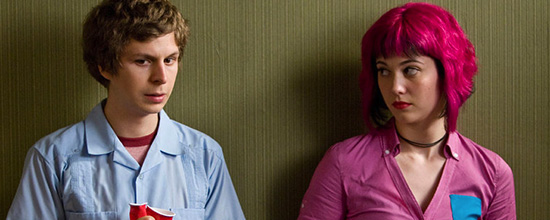
The films of Edgar Wright’s “Cornetto trilogy” may get more emphasis as the core of the director’s oeuvre, but allow one to submit that Scott Pilgrim vs. The World is the “most Edgar Wright” film we’ve witnessed yet in the still-young filmmaker’s career. A brilliant adaptation of Bryan Lee O’Malley’s comic book series of the same name, the film is a perfectly cast wonder of an action comedy that translates with preternatural ability the comic tension between banality and bombast present on the page. Scott’s (Michael Cera) existence as a slacker musician in a crappy Toronto indie rock band isn’t exciting or glamorous, which makes it all the funnier when his day-to-day romantic life is a series of climactic, overly dramatic videogame boss battles. Each Wright presents with a hyperkinetic style that revels in its joyful disconnect from reality or consequences. Freed from such trivial matters, Wright can present dynamic action sequences that still have time for clever asides and banal workplace humor, simultaneously getting the absolute best out of every person he has on hand. Really: When has Brandon Routh, as an actor, been put to better use than as an egomaniacal vegan with psychic powers? An early-career Brie Larson as rock singer Envy Adams is a bonus as well. —Jim Vorel
95. Bisbee ’17 (2018)
Director: Robert Greene

Robert Greene opens his essential new documentary, Bisbee ’17, with a quote from American writer Colin Dickey’s 2016 book, Ghostland: “Cities that are haunted … seem to straddle past and present as though two versions of the same city are overlaid on top of each other.” He’s talking about haunted manors littering the United States specifically and not the Arizona burg of Bisbee, but the town Greene acquaints us with indeed straddles its past and present, and something more—a collision between the two in the form of theater. In 1917, at the height of World War I, Bisbee was a critical hub in the war effort, not just a copper town but the copper town churning out minerals and profits. Then the miners went on strike, demanding safer work conditions and railing against campwide discrimination. To quash protests, Bisbee’s sheriff deputized a small army of locals, rounded up strikers in the early morning of July 12th, stuck them on cattle cars, and dropped them off in the New Mexico desert in an effort by the Phelps Dodge mining company and Bisbee’s law to halt dissent and restore order to their bottom line.
Greene comes into the story 100 years later, as Bisbee’s current residents, prepping for the Bisbee Deportation’s centennial, decide they must recognize the evils of Bisbee yesteryear. How best to do so? By putting on a reenactment, casting townsfolk as miners, as the sheriff’s posse, as witnesses to the travesty. This is Greene’s jam: He blends traditional documentary techniques, talking head interviews and appraisals of primary sources, with the artifice of feature narrative. Greene’s craftsmanship invites awe as easily as the reenactment itself, scrappy but successfully harrowing in execution. The players get into their roles with more than professional enthusiasm—their performances exhibit a relish and zeal both shaped by an underlying desperation to observe the truth when for so long Bisbee has lived with truth unspoken. As the crimes of the deportation haunt Bisbee and its inhabitants, so, too, are we haunted by them through the filter of Greene’s lens. But that experience, the experience of being haunted, proves vital. Maybe it’s necessary to let history haunt us. —Andy Crump
94. No Home Movie (2015)
Director: Chantal Akerman
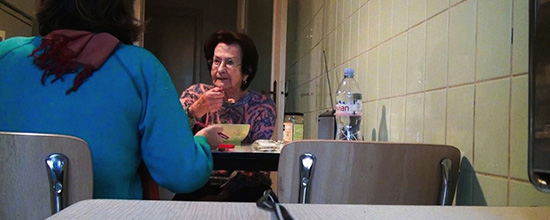
Most startling, perhaps, is Chantal Akerman’s voice when it first comes from behind the camera. She sounds broken, ground into gravelly paste, and given that she’s in her mother’s apartment in Brussels, filming small, intimate and completely mundane conversations had during visits, her mother’s health failing throughout, it becomes futile to source the legendary director’s pain. Her mother’s impending death, her own depression, the endless maw of distance and time that separates them when Akerman’s in the U.S.—No Home Movie breathes with regret: not that Akerman, or any of us, didn’t appreciate what she had when she had it, but that she didn’t appreciate enough, didn’t linger enough to savor her mother’s company, didn’t truly understand what her mother went through as an Auschwitz survivor, didn’t stay when she should have or remember what she’s forgotten, now all gone. As can often be the case with Akerman’s films, no meaning is approached directly, and every conversation or long shot (in this case: desert landscapes and her mother’s empty, perfectly clean apartment) is an oblique tapping into some sort of richer, subtextual vein. This isn’t a home movie, it’s much more aware than that; this isn’t a movie about Home, because Akerman, in her 60s, seems to be realizing that Home is something she’s missed all her life. No Home Movie is a reflection on that lack, on the emptiness she put between her and those she loved most, an emptiness we all wield, an emptiness that Skype and the phone can’t make up. Can anything make it up? Akerman committed suicide not long after the film’s release, a film she’s said she never intended to make when she was filming in 2014. If we’re looking for reasons as to why she did what she did, we have No Home Movie, which isn’t enough. It was never intended to be enough. —Dom Sinacola
93. Sorry to Bother You (2018)
Director: Boots Riley

Sorry to Bother You has so many ideas busting out of every seam, so much ambition, so much it so urgently wants to say, that it feels almost churlish to point out that the movie ends up careening gloriously out of control. This is rapper and producer Boots Riley’s first movie, and it shows, in every possible way—good, bad, incredible, ridiculous—as if he didn’t know if he’d ever be able to make another one. There are moments in Sorry To Bother You that will make you want to jump giddily around the theater. There are also moments that will make you wonder who in the world gave this lunatic a camera. (Some of those moments are pretty giddy too.) The former far outnumbers the latter.
Lakeith Stanfield plays Cassius, a good-hearted guy who feels like his life is getting away from him and thus tries his hand at telemarketing, failing at it (in a series of fantastic scenes in which his desk literally drops into the homes of whomever he is dialing) until a colleague (Danny Glover, interesting until the movie drops him entirely) recommends he use his “white voice” on calls. Suddenly Cash sounds exactly like David Cross at his most nasally and has become a superstar at the company, which leads him “upstairs,” where “supercallers” like him go after the Glengarry leads. That is just the launching off point: Throughout, we meet a Tony Robbins-type entrepreneur (Armie Hammer) who might also be a slave trader, Cassius’s radical artist girlfriend (Tessa Thompson), who wears earrings with so many mottos it’s a wonder she can hold up her head, and a revolutionary co-worker (Stephen Yeun) trying to rile the workers into rebelling against their masters. There are lots of other people in this too, and only some of them are fully human. It’s quite a movie. —Will Leitch
92. The Prison in Twelve Landscapes (2016)
Director: Brett Story
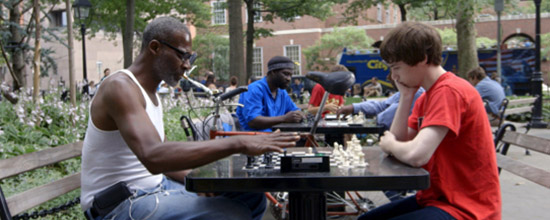
Empathy is at the forefront in The Prison in Twelve Landscapes, director Brett Story’s masterful collection of vignettes. No central figure to focus upon, Story uses her snapshots of different individuals to suggest something grander—namely, Americans’ inescapable entanglement with their country’s overwhelming prison system. With so many different stylistic techniques—sometimes her subjects address the camera directly, sometimes we’re a fly-on-the-wall observing, from a distance, people talking to each other—The Prison in Twelve Landscapes may risk didacticism, but such worries are mitigated by Story’s aesthetic adventurousness.
There’s a cumulative power, a headlong rush, in watching one vignette segue into another, the viewer trying to make connections between seemingly dissimilar American portraits. The Brooklyn man who started a business that ships penitentiary-approved goods to inmates; the Detroit P.R. rep who has no idea how slimy he sounds; the St. Louis County resident waiting in long lines—Story deftly makes the point that they’re all invisibly part of the same system, and the juxtaposing, sometimes counterintuitive correlations enliven each snapshot and make The Prison in Twelve Landscapes stronger collectively than in any one sequence. Other filmmakers would mount a frontal assault on the classism and racism rampant in the way we lock up so many people, but Story doesn’t want us to stare at the usual images and absorb the normal statistics. She’s asking us to see the dilemma in a new light, and her powerful essay film never stops making us queasy—and, at the same time, alive with anger and sorrow that the dilemma is being communicated so forcefully and innovatively. —Tim Grierson
91. Captain America: The Winter Soldier (2014)
Directors: Joe and Anthony Russo

Captain America: The Winter Soldier picks up post Avengers with Steve Rogers/Captain America (Chris Evans) in the modern day trying to be that quaint relic from his earlier life during World War II—the good soldier—but the black-and-white ethical landscape of that time has been displaced by countless shades of gray. Nick Fury (Samuel L. Jackson), the Black Widow (Scarlett Johansson), Alexander Pierce (Robert Redford) and S.H.I.E.L.D. itself are all embodiments of a more complex present than that to which Cap is accustomed. To their credit, screenwriters Christopher Markus and Stephen McFeely suggest early and often that no matter how much simpler the age from which Captain America has sprung, he’s not stupid. They also suggest—and this is something Captain America has had in common with Superman almost from the beginning—that one of Cap’s unofficial and less showy superpowers may just be a keen, correct sense of what’s right and wrong.
But no worries, Captain America: The Winter Soldier consists of more than moral quandaries and Steve Rogers sending discerning or suspicious looks in the direction of those around him—the brothers Russo have made, first and foremost, a thrilling action film. Starting with a perfectly paced rescue mission nicely leavened with relationship banter between Evans and Johansson’s characters, the film has little down time. This is especially true once the titular bad guy (Sebastian Stan) enters the picture (in an effort to erase Fury from it), but in truth, the movie is filled with enjoyable moments, both quiet and action-packed. That, along with the pitch-perfect casting of Evans as Cap, makes The Winter Soldier a worthy addition to the ranks of “flat-out fantastic sequels” and among the best superhero movies of the decade. —Michael Burgin
90. The Grand Bizarre (2018)
Director: Jodie Mack
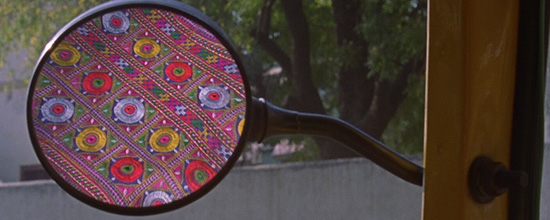
A spectacle of tedium; an opus of patience: Experimental filmmaker Jodie Mack seems to bring so many of her aesthetic and physical concerns to bear with the jaw-dropping The Grand Bizarre, one struggles to conceive of the ways she “got that” or “did that” or “made that happen.” Context, especially in Mack’s work, is important—the climax of the hour-long film uses the scant sounds of Mack’s 16mm Bolex camera in her studio, clicking once per image, to convey just how arduous the gleeful images we’d witnessed were to birth—and while we watch the swathes of textiles and colors spin and whirl across the screen and throughout countless international landscape, patterns whorling in time to a, in turns, quirky and menacing and blissful techno beat (like Holly Herndon’s Platform or Matthew Herbert’s concept albums, an arrangement of post-industrial detritus metamorphosing into music), we can’t escape the nagging question: Was all this work worth it? The answer must be “absolutely,” because The Grand Bizarre is too often astounding, but the answer is in the question as well. Mack wants us to know that she individually photographed innumerable pieces of cloth, that she painstakingly animated this whole hybridized doc. Mack wants us to be constantly aware of her work—just as she, in filming huge open air markets and major shipping ports and long car rides with fabric strobing in the rear view mirror (how many hours did she sit in the back of a car and just hold up pieces of cloth?), begs us to think about the labor behind these textiles and colors and patterns and materials, how much human effort is expelled in getting them, doing them, making them happen. Exciting and exhausting, The Grand Bizarre is both celebration and eulogy to that which nourishes us as much as it kills us. —Dom Sinacola
89. Shin Godzilla (2011)
Directors: Hideaki Anno, Shinji Higuchi
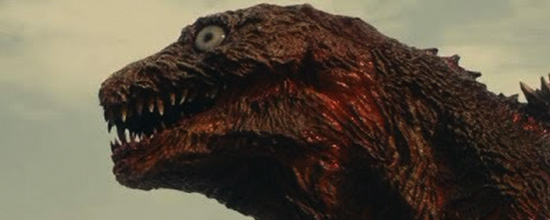
In the shadow of Shin Godzilla, Hollywood has failed. Gareth Edwards’ 2014 Godzilla movie wasn’t really one so much as it was a brand exercise, astoundingly executed, but divorced from Toho’s legendary lizard flicks. Godzilla (2014) does not encourage audiences to seek out Godzilla (1954), because the two are fundamentally different beasts, the former adept at creating some serious awe and suspense from its abundant CGI, while the latter wore its allegorical bonafides openly, strikingly realized man-in-rubber-suit mise-en-scene providing a stark balance to images of evacuating citizens, panicking under the threat of otherworldly disaster having just gotten over a previous otherworldly disaster. Hollywood doesn’t know what to do with that kind of trauma.
Looking back, Hideaki Anno and Shinji Higuchi seem to have preemptively rescued what Hollywood would have otherwise lost. Rendering the CGI Godzilla with traces of rubber-suit bounce and flavor, they never abandon the tactile nature of the kaiju melee to the endless void of photorealism, while still reinventing, from one moment to the next, what Godzilla, and Godzilla, is. Like Ishiro Honda’s first Godzilla, Shin Godzilla is about the threat of nuclear annihilation as much as it is about Japan’s ability to band together—which isn’t so much a virtue as it is a survival mechanism—in this case alluding directly to the aftermath of the Fukushima nuclear disaster. It’s also half dry political farce, starring the facile entirety of the Japanese government, that tumbles into a sci-fi thriller that almost trips into rom-com, metamorphosing and evolving, as does its monster, into ever delightful permutations of the kaiju formula. At one point, Godzilla splits the bottom of its jaw apart to open its gaping maw even wider, hemorrhaging nuclear energy like so much projectile vomit. It means nothing, and it means everything, and it means that some poor bureaucrat’s got a lot of paperwork to do. —Dom Sinacola
88. Shirkers (2018)
Director: Sandi Tan

Making sense of one’s past can be both a lifelong undertaking and a thorny proposition. In Shirkers, novelist Sandi Tan accomplishes that trickiest of endeavors, directing a documentary about herself that isn’t cloying or cringe-worthy. Quite the contrary, her movie is refreshingly candid and self-critical: She may be the star of the show, but she has a story to tell and the right perspective to frame it properly. Tan narrates the documentary as a memory piece, recounting her childhood in Singapore with her best friend Jasmine, where they were the two cool kids in their pretty square school, dreaming of being filmmakers and leaving their mark. To further that ambition, they collaborated with another friend, Sophia, on a surreal road movie called Shirkers, which would be directed by Tan’s mentor, an older teacher named Georges who carried himself as someone who knew his way around a movie camera. In her late teens and perhaps smitten with this man who showed her such attention—the documentary is cagey on the subject—Tan was intoxicated by the rush of making a film that she wrote and would be the star of. So how come we’ve never seen it? The documentary traces the strange, mysterious journey of the project, which was waylaid by Georges sneaking off with the reels of film with a vague promise of finishing the work. That never happened, and 20 years later Tan decides to open those old wounds, connecting with her old friends and trying to determine what became of Georges. Scenes from the unfinished film appear in Shirkers, tipping the audience off to the fact that there will be a happy-ish resolution to Tan’s quest. But the documentary ends up being less about tracking down the film canisters than an exploration of nostalgia, friendship and the allure of mentors. Tan is lively, self-effacing company throughout—her voice has just the right sardonic tinge—but her visits with Jasmine and Sophia are particularly lovely and illuminating, suggesting how lifelong pals can see us in ways that we cannot. —Tim Grierson
87. Can You Ever Forgive Me? (2018)
Director: Marielle Heller
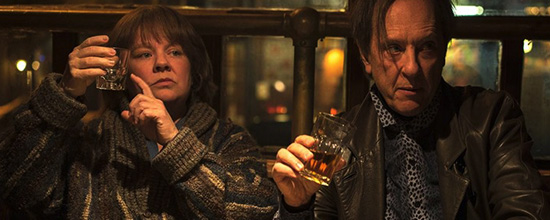
Ten minutes into the film, the aging, broke, world-weary Lee Israel (Melissa McCarthy) walks by a room of women circled around a fastidiously dressed man decrying “Writer’s Block” as laziness, as a justification of the inability to do work or to be original. At a party held in her agent Marjorie’s (Jane Curtin) enormous apartment (there’s a coat check guy), Israel is an invisible outsider to the world of the literary elite. No one talks to her, plus there’s the palpable friction of her contempt for the snobbery of such characters who ramble on about structure and reflexivity with her yearning to be recognized and embraced as worthy and talented. The writer of a handful of well-received and panned biographies, Israel is told by Marjorie that she has not made a name for herself, that she has disappeared behind her writing. Or, as Israel retorts, she’s doing her job. But still, she has doubt. And what do so many queer people do when they want to toe the line between disappearing into someone else and flaunting their own persona? They do drag.
Certainly, one of the fundamental questions at the heart of Can You Ever Forgive Me?, written by Nicole Holofcener and Jeff Whitty, based on Lee Israel’s autobiography, is a notion of authenticity within art, or, in this case, within writing. To make ends meet, Israel begins to forge and embellish the personal letters of literary and social figures like Dorothy Parker and Noël Coward, and as she becomes further invested in the con of selling them to collectors and bookstore owners, she realizes she has to negotiate the space between her persona as a writer and how much of that persona is predicated on imitation without a real grasp on her own sensibilities or idiosyncrasies as a writer. How much real is there in this representation, how much authenticity is there in her artifice?
Through the eyes of Israel and Jack Hock (Richard E. Grant), New York retains the gritty luster of the 1970s, a time where the city still had a place for them. Heller and Holofcener and Whitty have an otherworldly skill at pinpointing the queer bitterness of these people’s lives, their willingness to keep living, and what may lurk beneath their armor. Like few other films, Can You Ever Forgive Me? seems tailor-made for a person like me: It’s a film about the frustrating, often sad life of writers, the anxiety of being able to create, the uncertainty of whether you have a voice in your craft, the adoration for a time and its figures to whence you do not belong, the things queer people will do to fight off loneliness. —Kyle Turner
86. We Are the Best! (2013)
Director: Lukas Moodysson
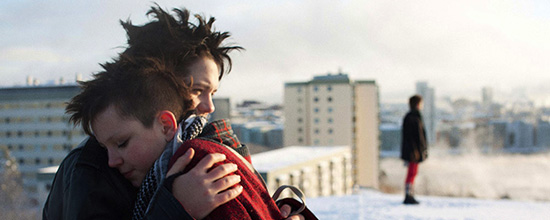
In 1980s Sweden, everything that’s happening in the world—the fear of Soviet submarines invading, the gradual industrialization of the country, the Moderate Party gaining control of parliament—doesn’t really include Bobo (Mira Barkhammer), an aspiring punk rocking tween with a lush of a mother. Spending most of her evenings in her room listening to tapes of her favorite punk band, the short and curly-haired Bobo teams up with her best friend and mohawk-sporting Klara (Mira Grosin) to create a band of their own. Wrangling a guitar-playing Christian girl, Hedvig (Live LeMoyne) into their quest to join the school talent show, they’re met with nothing but skepticism from their peers and parents. But Lukas Moodysson’s We Are the Best!, adapted from graphic novelist Coco Moodysson’s memoir Never Goodnight, is hardly a conventional coming-of-age film. Though it features recognizable tropes from the genre—Boys! Neglectful parents! Angst!—We Are the Best! is filled with such joy and ebullience that it feels liberated from the restrictive structure of so many teen films. With a freewheeling, quasi-improvisatory style, Moodysson imbues his film with a gorgeous ease and tenderness, crafting a little world for these girls and their audience to negotiate their politics, find their voice and fumble along the way. —Kyle Turner
85. High Life (2018)
Director: Claire Denis

High Life begins with a moment of intense vulnerability, followed immediately by a moment of immense strength. First we glimpse a garden, verdant and welcoming, before we’re ushered to a sterile room. There we realize there’s a baby alone while Monte (Robert Pattinson), her father maybe, consoles her, talking through a headset mounted within his space helmet. “Da da da,” he explains through the intercom; the baby starts to lose her shit because he’s not really there, he’s perched outside, on the surface of their basic Lego-piece of a spaceship, just barely gripped on the edge of darkness. They’re in space, one supposes, surrounded by dark, oppressive nothingness, and he can’t reach her. They’re alone. Next, Monte empties their cryogenic storage locker of all the dead bodies of his once-fellow crew members, lifting their heavy limbs and torsos into space suits, not because it matters, but maybe just because it’s something to do to pass the time, as much a sign of respect as it is an emotional test of will. Monte looks healthy and capable, like he can withstand all that loneliness, like he and his daughter might actually make it out of this OK, whatever this is. High Life lives inside that juxtaposition, displaying tenderness as graphically as violence and anger and incomprehensible fear, mining all that blackness surrounding its characters for as much terror as writer-director Claire Denis can afford without getting obvious about it. Pattinson, flattened and lithe, plays Monte remarkably, coiled within himself to the point that he finishes every word deep in his throat, his sentences sometimes total gibberish. He doesn’t allow much to escape his face, but behind his eyes beams something scary, as if he could suddenly, and probably will, crack. He says as much to Willow, his kid, whispering to her while she sleeps that he could easily kill them both, never wanting to hurt her but still polluting her dreams. He can’t help it, and neither can Denis, who, on her 14th film (first in English), can make an audience believe, like few other directors, that anything can happen. Madness erupts from silence and sleep, bodily fluids dripping all over and splattering throughout and saturating the psyches of these criminal blue collar astronauts, the overwhelming stickiness of the film emphasizing just how intimately close Denis wants us to feel to these odd, sick fleshbags hurtling toward the edge of consciousness. —Dom Sinacola
84. Force Majeure (2014)
Director: Ruben Östlund

Hidden behind this uncomfortably snickering fable about modern masculinity is something with no real patience for heteronormative nonsense. Though Force Majeure is mostly about a seemingly good and cool dad (Johannes Bah Kuhnke) who makes a bad and lame split-decision while on vacation with his seemingly perfect family, the film would rather question the more primeval forces that bind us: monogamy, safety, companionship, blood and lust. This isn’t about a father who, in a brief moment of weakness, failed to protect his family, it’s about the dynamics of any relationship: Can we ever know the people we love most? Why not? Director Ruben Östlund asks this over and over—especially when subjecting our sad dad and his best friend Mads (Kristofer Hivju, Tormund from Game of Thrones) to the indignities of age and irrelevance—wreaking sickly funny havoc upon his male protagonist’s ego as he builds to a sweet little climax wherein this beaten-down bro revels in the chance to show his family his true colors. —Dom Sinacola
83. Coco (2017)
Directors: Lee Unkrich, Adrian Molina
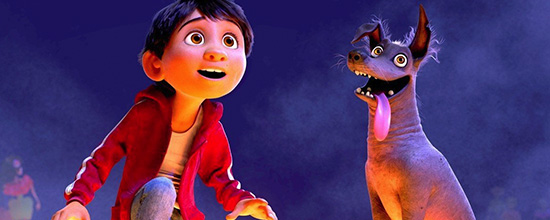
Thanks to its story and, most importantly, its setting, Coco may count as one of Pixar’s clearest successes—and for many who long to see their culture center stage instead of just a flavor sprinkle, the story of Miguel (Anthony Gonzalez) as he struggles to pursue his dreams could prove the studio’s most meaningful yet. The implicit contract between films like Coco and the audience is a simple one: Sit back and let us immerse you in a world you haven’t seen before, or one you’ve only imagined. Directors Lee Unkrich and Adrian Molina do just that. Coco’s underworld is richly textured and imagined, but so is the “real world” where we start and end up. Sure, by now it’s what we expect from Pixar, but it’s notable nonetheless. And the lasting accomplishment of Coco lies in the reverence and joy with which it depicts another culture’s celebration. Dia de los Muertos isn’t used as some convenient, exotic setting or explored through the eyes of someone from the United States (though early iterations of the script did just that, apparently). Instead, the film represents a full embrace of a culture and its people, as well as a celebration of family, both present and past. As such, it’s difficult to imagine healthier holiday fare. —Michael Burgin
82. Once Upon a Time in Anatolia (2011)
Director: Nuri Bilge Ceylan

Taken purely on its plot, Once Upon a Time in Anatolia is a crime procedural. But plot does not a movie make: In actuality, it’s more like a human procedural, to be inane but also fairly accurate. Through how it uses the Anatolian wilderness and captures and edits around the lines of its narrative, the film creates a contemplative context in the presence of atrocity and then carefully observes the characters that it puts in that context.
Nothing can ever be a Tarkovsky film besides a Tarkovsky film, but this is the closest anyone’s gotten without losing themselves. Turkish director Nuri Bilge Ceylan has the philosophical discourse and the images which meditate, but applies it to stories that are personal to him and his culture, and he translates Tarkovsky’s elegant spirituality into the parallel mysteries of the psyche. Apples floating down a stream have a completely different directive in theme than they would in a Tarkovsky film, but in Anatolia they hit with the same sort of mythic import, digging away at some part of our collective subconscious that we can’t fully touch.
Ceylan had been making esteemed films for about a decade and a half before Once Upon a Time in Anatolia, but this is the moment that the whole sphere of cinephilia stood up and took notice. To be frank, it’s one of this decade’s great masterpieces, a vision of the world and the people that live in it that is epic not as much for breadth as for bottomless depth. It plunges us into the spaces between the words of its scenario. It lets us taste its terroir, a natural essence of bleak humor and vivid melancholy, to find what’s underneath us all. To taste the dirt we’re made of. —Chad Betz
81. Roma (2018)
Director: Alfonso Cuarón
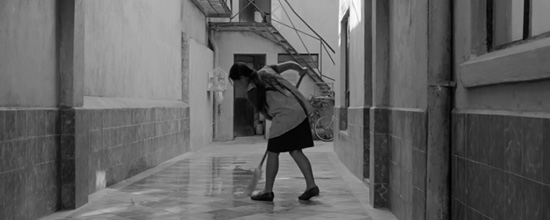
Alfonso Cuarón’s most intimate film is also his most distancing. The camera sits back, black-and-white, focused not on the bourgeois children that represent the cinematographer-writer-director and his siblings growing up in Mexico City several decades ago, but moreso on the indigenous woman (Yalitza Aparicio) that cares for them and the household. Not even entirely focused on her, perhaps more focused on its classicist compositions of a place that no longer exists in the way Cuarón remembers it. The camera gazes and moves in trans-plane sequencing, giving us foreground, mid-ground and background elements in stark digital clarity. The sound mix is Dolby Atmos and enveloping. But the base aesthetic and narrative is Fellini, or long-lost Mexican neorealism, or Tati’s Playtime but with sight gags replaced by social concern and personal reverie.
Reserved and immersive, introspective and outward-looking, old and new—some have accused Roma of being too calculated in what it tries to do, the balancing act it tries to pull off. Perhaps they’re not wrong, but it is to Cuarón’s immense credit as a thoughtful technician and storyteller that he does, in fact, pull it off. The result is a singular film experience, one that recreates something that was lost and then navigates it in such a way as to find the emergent story, then from that to find the emotional impact. So that when we come to that point late in Roma, we don’t even realize the slow, organic process by which we’ve been invested fully into the film; we’re not ready to be hit as hard as we are when the wallops come and the waves crash. It’s almost unbearable, but we bear it because we care about these people we’ve become involved with. And such is life. —Chad Betz
80. Lemonade (2016)
Directors: Beyoncé, Kahlil Joseph, Melina Matsoukas, Dikayl Rimmasch, Mark Romanek, Todd Tourso, Jonas Åkerlund
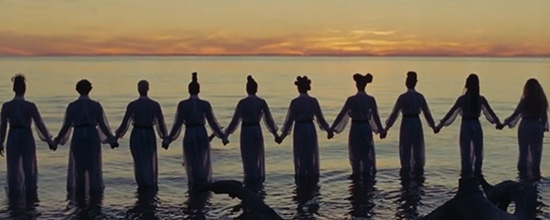
Lemonade opens with a roar, or a growl, or it might be a rumble. It may be all three. Her boxer braids slowly revealed, Beyoncé moves carefully, at calculated but glacial speed, returning from a rest against the roof of a car. And the next shot: black and white, rusty chains disturbed by not even the wind lay against a wood shed, our gaze pointed beyond the tips of the trees. And the third short: floating above grass green and yellow, swaying in the wind. Only then does, at the behest of a queen, the music start.
Lemonade, the “visual album” created by Beyoncé (with collaborators Kahlil Joseph, Melina Matsoukas, Dikayl Rimmasch, Mark Romanek, Todd Tourso and Jonas Åkerlund), is a feast of sumptuous, incisive imagery and a banquet of sounds contemporary, modern and archival. It is a history of blackness, womanhood, a fight for freedom and liberation, the fury of silence and forced restraint, and a celebration of those things that break away from oppression and build closeness in community. Pulling from a history of film, photography and art that spans across nations and races, imbuing the film with eruptions of rage, beauty, sorrow and joy in both song (“Freedom,” “Daddy Lessons,” “Six Inch” and “Don’t Hurt Yourself” are favorites) and spoken word (by Warsan Shire), Beyoncé has crafted nothing less than a gift to her audience. (She continues to go the extra step with her community in mind, with the Formation Scholars.) With Lemonade, she let us know that it’s Beyoncé’s world and we’re just living in it. —Kyle Turner
79. Call Me by Your Name (2017)
Director: Luca Guadagnini
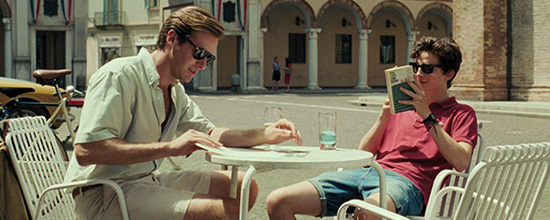
In Kyle Turner’s Paste review of Call Me By Your Name, he muses that in the film’s opening credits “there’s enough of a hint to suggest that, as Michael Stuhlbarg’s professorial patriarch Mr. Perlman mentions, the statues are ‘daring you to desire.’ The film, while occasionally inching towards it, never takes that dare.” Much has been made about whether the film flinches at the physical love it champions, or embraces with grace and decorum the same love, finding eroticism in other (maybe juicier, stickier) images. Regardless, the allure of Call Me By Your Name, the story of a 17-year-old rich white kid (Timothee Chalamet) and his Italian summer tryst with a hunky grad student (Armie Hammer), is in all of that anticipation and lazy anxiety, of never being quite sure what’s right for you because you’re not yet quite sure what “you” means. Perhaps Guadagnino never “takes that dare” because the film is less about the consummation of the two characters’ desires, and more about the dissolution of that consummation, the need to let it go for all its fantasy and excitement and confusion, and then to live with the quiet, needling regret that more could have been done, that somehow the desire, the sumptuousness of the flesh, should have been better grasped. It’s in Michael Stuhlbarg’s final, bittersweet monologue, as well as in Chalamet’s credits-long fireplace cry: Call Me By Your Name is an exquisitely shot movie, alive with the privilege and luxury of what it means to spend one’s formative sexual years in the Italian countryside, but more importantly, it’s a movie that aches far harder for the lives and relationships that could have been. —Dom Sinacola
78. The Rider (2017)
Director: Chloé Zhao

A dream dissipating. The Rider begins with flashes of a horse, in close-up, so intimately observed we immediately abandon all assumptions of symbolism or pretention of deeper meaning. Chloé Zhao’s second film invites social commentary and political dissection—it’s about the obsolescence of a certain way of life; about the death of toxic masculinity as exigency of a frontiersman’s spirit of adventure; about the failure of rural America to embrace an obvious socioeconomic future—but there’s nothing clearer, or more devastating, in The Rider than the bond between cowboy and horse. Said cowboy, and aforementioned dreamer, is Brady Blackburn (Brady Jandreau), a young, lithe South Dakotan rodeo rider still recovering from a head injury, a blurry accident we re-watch with Brady via YouTube video on his phone. With a cast of non-professionals basically playing themselves, Zhao rarely pushes her actors to too riskily delve into melodrama, or anything, for that matter, that might make them uncomfortable. Instead, in Jandreau and his family, Zhao discovers a beautiful, intuitive sense of calm, which she reflects in long, mournful shots of Dakotan vistas, so unhurried and unhindered by the boundaries of the screen that each interstitial segment—often of Brady contemplating the world before him as he stands, his hip cocked, before a magnificent sunset—feels overwhelming. What cinematographer Joshua James Richards can do with a camera bears the weight of countless filmmakers in thrall to the pregnant possibility of this marvelous continent. Every frame of this film speaks of innumerable lives—passions and failures and tragedies and triumphs—unfolding unfathomably. —Dom Sinacola
77. The Wolf of Wall Street (2013)
Director: Martin Scorsese
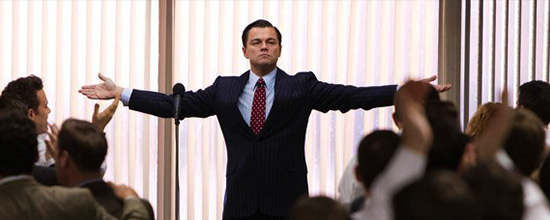
The decade’s been both kind and not so kind to good ol’ Marty, ten years of bad takes questioning his credentials for directing Silence, for denying Marvel movies the honorific of “cinema,” for forcing audiences to showers en masse following screenings of The Wolf of Wall Street. And yet it’s impossible to keep him down; he’s immune to controversy and he thrives on lively debate, which is why, at 70 years old, his chronicle of the life, times and crimes of Jordan Belfort (Leonardo DiCaprio)—a stock broker and inveterate fraudster who bilked over 1,000 schlemiels, suckers and saps out of billions (and got off easy)—feels like something an artist half his age directed.
The Wolf of Wall Street is a pissed off film. It’s also a horny, pervy, brutal, an impeccably made and fundamentally hideous film. At every passing image, Scorsese’s white-hot rage burns around the edges of the frame. The director has his own beefs and conflicts with his Christian faith, but here his presence is felt as a furious deity sitting in judgment on the fun Belfort has screwing over his clients, two-timing his first wife, jerking around his second wife and doing more blow in three hours than Scorsese himself did in the 1970s and ’80s. The easy knock to make against this movie is that it endorses the finance bro culture it navigates over the course of its running time, because at no point does Scorsese impose manufactured morality on what happens in front of us; instead he plays the hits as Belfort wrote them, showing the audience exactly what Belfort did while running his company, Stratton Oakmont, and while running around on his spouses. That the film ultimately ends with Belfort out on the prowl again is the ultimate indictment: Being rich allowed this man to get away with financial murder, because being rich, in the end, makes everything better.
“Being rich makes everything better,” for some, is the movie’s embraced philosophy, but The Wolf of Wall Street doesn’t appreciate displays of wealth unhinged. It reviles them. Scorsese puts energy into the film, a spring in its every greedy step; one could call such debauchery without consequences a “good time.” But The Wolf of Wall Street doesn’t care about that kind of time as much as it cares about hanging Belfort out to dry. —Andy Crump
76. The Avengers (2012)
Director: Joss Whedon
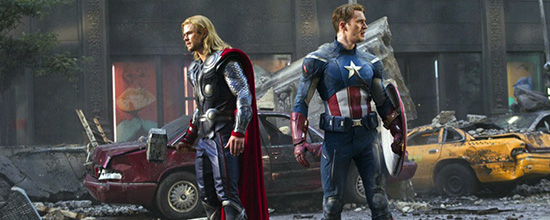
Nestled amongst the gaudy box office numbers ($1.52 billion) of Joss Whedon’s blockbuster is a much simpler achievement. Yes, The Avengers should evoke a deserved appreciation of Joss Whedon’s directorial skills. And yes, the film’s release and reception make for a natural “And that’s when it was official” moment that the MCU took over Hollywood. But for comic book fans especially, The Avengers represents the first instance of the superhero team dynamic truly captured and sustained on film. Even though the X-Men and the Fantastic Four had received big screen treatments at that point, those films were all still pretty static; the interaction between both heroes and villains were slow, separate vignettes rather than two-way, three-way or more-way battles. To be fair, Whedon had plenty of help, both from long-term studio strategy (there’s a rarely heard kudos for you) and cast. In fact, Robert Downey Jr. may be the ideal delivery system for Whedon’s signature banter—a banter that permeates and propels the plot of the two-hour film along just as effectively as the set action pieces. If Raimi’s Spider-Man showed why comic book superheroes are fun, The Avengers showed why superhero teams are—and set the stage for the cinematic behemoth to follow. —Michael Burgin
75. Hale County This Morning, This Evening (2018)
Director: RaMell Ross

In Hale County This Morning, This Evening, seeing truly is believing, or at least comprehending, because putting what filmmaker RaMell Ross has done into words is as close to impossible as writing about film can get. A portrait of Alabama’s Hale County—a place named for Deputy to the Provisional Congress of the Confederate States and career racist Stephen F. Hale—as well as a glimpse into the lives of Ross’s family, friends and neighbors, the film defies documentarian conventions through structure and language: There are no talking heads, no bland expositional devices, only stream of consciousness storytelling occasionally interspersed with intertitles that playfully, but soberly, fill in the names of Ross’s subjects, or provide context we would certainly lack without them. In its interior, free-associative way, Hale County This Morning, This Evening is thrilling, a word not often used for characterizing slice-of-life documentaries. (In line with that: If possible, it must be seen on the big screen, too.) Ross boils down lifetimes and the passage of days, weeks, months, perhaps even beyond, into 70 minutes, and, as a result, the movie ultimately lives in between the passage of seconds. Rather than feel compressed, Hale County This Morning, This Evening emerges sweeping and grand, an elusive, awesome American fable. —Andy Crump
74. Stories We Tell (2013)
Director: Sarah Polley
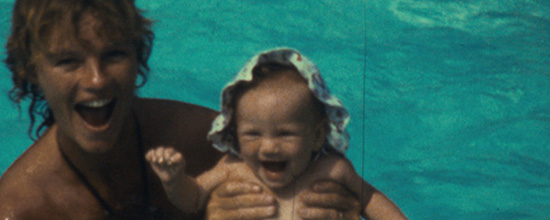
With Stories We Tell, actress-turned-director Sarah Polley has proven herself a consummate filmmaker, transforming an incredible (and incredibly) personal story into a playful yet profound investigation of the nature of storytelling itself. The central mystery to her documentary—that the man she grew up believing to be her dad is not her biological father—is public knowledge at this point, easily revealed in the film’s trailer and associated marketing. Yet Polley conceals and reveals information—starting with her relationships to her interview subjects—in such an effortless way as to constantly surprise, even shock, her audience without leaning into revelations for the sake of them. The result is a film that scrutinizes the ultimate purpose of truth—only to come up with a gorgeously rendered shrug. —Annlee Ellingson
73. Mirai (2018)
Director: Mamoru Hosoda

Most, if not all, of Mamoru Hosoda’s original films produced in the past decade function, to some degree or another, as exercises in autobiography. Summer War, apart from a premise more or less recycled from Hosoda’s 2000 directorial debut Digimon Adventure: Our War Game!, was the many-times-removed story of Hosoda meeting his wife’s family for the first time. 2012’s Wolf Children was inspired by the passing of Hosoda’s mother, animated in part by the anxieties and aspirations at the prospect of his own impending parenthood. 2015’s The Boy and the Beast was completed just after the birth of Hosoda’s first child, the product of his own questions as to what role a father should play in the life of his son. Mirai, the director’s seventh film, is not from Hosoda’s own experience, but filtered through the experiences of his first-born son meeting his baby sibling for the first time. Told care of the perspective of Kun (Moka Kamishiraishi), a toddler who feels displaced and insecure in the wake of his sister Mirai’s birth, Mirai is a beautiful adventure fantasy drama that whisks the viewer on a dazzling odyssey across Kun’s entire family tree, culminating in a poignant conclusion that emphasizes the beauty of what it means to love and to be loved. Mirai is Hosoda’s most accomplished film, the recipient of the first Academy Award nomination for an anime film not produced by Studio Ghibli, and an experience as edifying as it is a joy to behold. —Toussaint Egan
72. Drug War (2012)
Director: Johnnie To
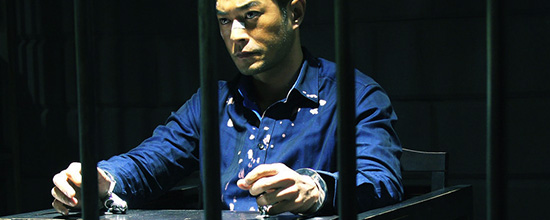
When Hong Kong director Johnnie To finally released Drug War, his first film completely shot in mainland China, it felt like a culmination—of his unfussy knack for style; of his gracefully plotted potboiling; and, most of all, of the one thing he was probably put on this planet to realize: his effortless ability to direct elaborately un-elaborate action setpieces. Which is to say that Drug War almost religiously resists drumming up intensity through unhinged camera movement or breathless editing. The film is clean, it’s clear, it breathes with room despite its suffocating tension—it’s able to feel like some epic battle between good and evil borne of a bunch of simple crime thriller elements. And in its final 20 minutes it comes together as a beautiful, meticulously realized shoot-out that both decimates all life we’ve come to know and love in the slick 90 minutes before it, and does something even better: shows what economy looks like in an action movie. Nothing wasted, nothing unearned, and every moment completely functional. It’s pretty brutal. —Dom Sinacola
71. 13 Assassins (2011)
Director: Takashi Miike
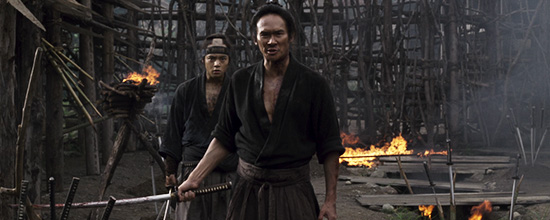
An adaptation of Seven Samurai more in spirit than in plot, Miike’s 13 Assassins is a sprawling blood bath of mythic proportions—in other words, nothing new for the Japanese auteur. What Miike later expounded upon with his surprisingly faithful adaptation of Masaki Kobayashi’s Hara-kiri he began here, translating classic chambara films into neo-realistic accounts of a gritty, painful time for Japanese culture, making historical epics literally eviscerating experiences. Long and grueling, 13 Assassins could easily be Miike’s best film, a high honor coming from such a multifaceted and unsettling filmmaker, a thing of unadulterated, unrelenting storytelling payoff. When the phrase “TOTAL MASSACRE” makes its reappearance—in the beginning a terse description of tragedy, in the end wielded as a sign of vengeance, announcing one’s descent into Hell—all gruesome needs come to pass. —Dom Sinacola
70. Pariah (2011)
Director: Dee Rees
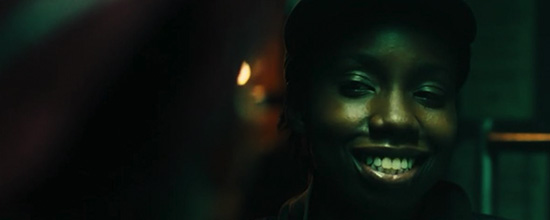
The first feature by Spike Lee protégé Dee Rees tells the story of teenager Alike (Adepero Oduye), a dutiful and accomplished daughter from a religious household in Brooklyn. As she struggles to find a proper expression of her sexuality, she follows her out friend Laura (Pernell Walker) into a scene of African-American lesbians whose brash liveliness proves a bit unsettling. When Alike’s mother introduces her to Bina (Aasha Davis), Alike contends with both her own sexuality and the ways that her identity ties her to a community she doesn’t quite fit in with. Shot in Brooklyn in a vivid palette of deep primary colors, Pariah is evocative of Spike Lee at his best. However, in content, the film is distinctive in its engagement with characters who seek to belong. Eschewing both hipster navel-gazing and pat clichés, Pariah instead lets its characters exist in a beautiful human ambiguity, on the edge of society but also finding their own place at that edge. The result is a thought-provoking and thoroughly entertaining addition to the canon of modern queer film. —Nick Mattos
69. Star Wars: The Last Jedi (2017)
Director: Rian Johnson

The Last Jedi, unlike its predecessor, has the freedom to be daring, and perhaps the most thrilling thing about it—and there are many, many thrilling things—is how abundantly it takes advantage of that freedom. If The Force Awakens was basically just Star Wars told again in a new, but familiar way, The Last Jedi challenges the audience, challenges the Star Wars mythos, even challenges the whole damned series itself. It blows the universe up to rebuild it; it is a continuation and a new beginning. And more than anything else, it goes places no Star Wars film has ever dreamed of going. In a way, the success J.J. Abrams had with The Force Awakens, particularly how decidedly fan-service-y it was, laid the groundwork for what The Last Jedi is able to pull off. That movie reminded you how much power and primal force this series still had; this movie is an even more impressive magic trick: It uses that power and force to connect you to something larger. Not everything in The Last Jedi works perfectly, but even its few missteps are all founded in the desire for something new, to take risks, to push an American myth into uncomfortable new directions. —Will Leitch
68. The Fits (2015)
Director: Anna Rose Holmer
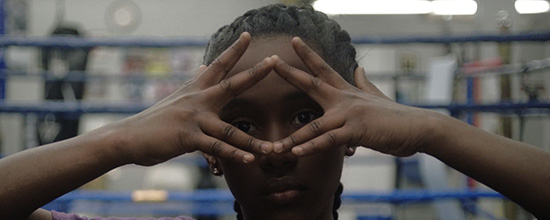
It’s not difficult to imagine a different cut of Anna Rose Holmer’s The Fits that hews closer to the arc of a traditional sports story. Hers has the makings of a familiar one, about a misfit who wants more than anything to compete—but unlike most stories of inspirational audacity, The Fits is as much about discomfort as the catharsis that comes with achievement. In it, Toni (Royalty Hightower) is an 11-year-old who has more experience with stereotypically male pursuits like lifting weights and punching speed bags than the usual interests of a pre-teen girl. She spends nearly all of her time at the Lincoln Recreation Center alongside her boxer brother, Jermaine (Da’Sean Minor), pushing her body to the limit. While she shows a remarkable aptitude for the ascetical devotion required for boxing, she still dreams about competing on the dance team, “The Lincoln Lionesses.”
Framed with a rigid sense of space by cinematographer Paul Yee, and backed by the groaning score from veteran composers Danny Bensi and Saunder Jurriaans, The Fits is infused with such dread that one can’t help but imagine that characters’ muscles and bones could break or shatter at any moment. The film’s most explicit example of which may be Toni pulling off a temporary tattoo, but The Fits is firmly a story of metaphysical body horror, an allegory about our greatest fears of physical fragility shot brilliantly through a feminist lens. With that, the film manages to reinvent the sports story as something both brainy and physically pure. —Michael Snydel
67. The Souvenir (2019)
Director: Joanna Hogg
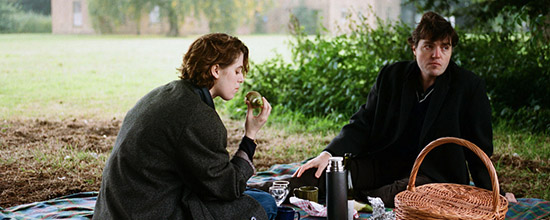
Hogg’s work extends back to the mid-to-late 1980s, when she made her first short film, worked on BBC miniseries, and began directing TV shows. She started making feature movies in 2007 with Unrelated and somewhat steadily continued down that path with Archipelago (2010) and Exhibition (2013). Her latest film is perhaps her best to date, certainly her most personal, and without a doubt one of 2019’s most remarkable releases. Rooted in her experiences as an artist and based, in part, on entries in her own diary, The Souvenir settles into the perspective of Julie (Honor Swinton-Byrne), a demure film student in 1980s London prepping for her graduation project, a drama of working-class proportions ringing of kitchen sink realism à la Mike Leigh or Tony Richardson. The question of her credentials, and of whether she has either the right or the perspective to make a film about the hard lives led by Sunderland’s laborers, is raised early on and repeated throughout, both by her professors and her beau, Anthony (Tom Burke). Like Julie, Anthony is possessed of privilege, which makes his comments especially condescending: Who the hell is he to talk to her about privilege in the first place? Admittedly, he has an occasional point, but while these points are made, the movie takes careful, quiet note that every voice critiquing Julie happens to be male. So it goes in a man’s field in a man’s world in the ’80s. Rather than seize on this imbalance to make an argument, Hogg instead lets it serve as fodder for reflection. Timid women on paths of self-discovery recur throughout her filmography, most of all Unrelated, a heartbreaking movie that, much like The Souvenir, takes unexpected turns without telegraphing or forcing them. A hushed, unassuming, intimate movie, Hogg’s latest reminds audiences of the power of cinema by interrogating the definition of cinema itself. Cinema lets people reckon with life (others’ or their own), and it lets them reckon with their privilege (be it their lack or surplus). Julie sees the world as cinema because the world is cinema. Taken together, it all makes this particular Souvenir as close to an instant masterpiece as movies can get. —Andy Crump
66. Elle (2016)
Director: Paul Verhoeven
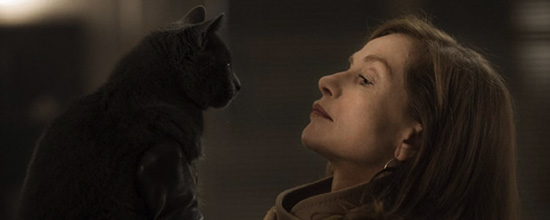
Considering its touchy subject matter—a woman’s unconventional, to say the least, response to her rape—it’s a bit surprising that Paul Verhoeven’s latest provocation hasn’t really caused the same kind of firestorm of controversy that, say, Showgirls did. This could be explained by Verhoeven’s art-house-friendly aesthetic this time around—but it most likely has more to do with just how much imagination and empathy Isabelle Huppert puts into connecting the dots of her character’s difficult-to-pin-down psyche. As always, Huppert has no interest in begging you to like her, which seems appropriate for a character like Michèle Leblanc, hellbent on refusing to be seen as a victim after her brutal rape by a masked stranger in its opening scene. But Huppert, working from David Birke’s screenplay (adapted from a novel by Philippe Djinn), digs deeper and comes up with some even more astonishing psychological links. Her occasionally manipulative way with people, her alternating attraction/repulsion toward violence and domination—all can be glimpsed in Huppert’s brilliantly dense and utterly fearless characterization, offering yet another remarkable example of why she’s celebrated as one of the finest actresses in the world. —Kenji Fujishima
65. Krisha (2016)
Director: Trey Edward Shults

You’ve seen the plot of Krisha before: self-destructive woman with a drinking problem goes to a family gathering supposedly having made strides in putting her life back together, but finds the tensions that arise testing her resolve to not go back to the bottle. Jonathan Demme explored similar territory in his 2008 film Rachel Getting Married, and Trey Edward Shults’s debut film does have a similar looseness to it, a feeling that anything can happen at any time. That, however, is where the similarities end. Whereas Demme’s film was warmly observational, Shults’ film aims for an expressionism that imaginatively uses formal elements to invite us into the titular main character’s fractured psyche. Krisha could be seen as cinematic family therapy: Shults’s way of dealing with what was apparently a troubled home life. But you don’t need to know all that to appreciate the passion he brought to this project. One can sense it in the film’s long takes and still setups, in the alternation between montages of unnerving chaos and lengthy scenes of shattering solitude. Krisha does more than announce a potentially major new talent; it shakes new, and tragically devastating, energy into the dysfunctional family drama. —Kenji Fujishima
64. Shoplifters (2018)
Director: Hirokazu Kore-eda

The Shibatas—Osamu and Nobuyo (Lily Franky and Sakura Ando), daughter Aki (Mayu Matsuoka), son Shota (Kairi Jo) and grandma Hatsue (Kirin Kiri)—live in tight quarters together, their flat crowded and disheveled. Space is at a premium, and money’s tight. Osamu and Shota solve the latter problem by palming food from the local market, a delicately choreographed dance we see them perform in the film’s opening sequence: They walk from aisle to aisle, communicating to each other through hand gestures while running interference on market employees, a piano and percussion soundtrack painting a scene out of Ocean’s 11. It’s a heist of humble purpose. Once they finish, Shota having squirreled away sufficient goods in his backpack, father and son head home and stumble upon little Yuri (Miuy Sasaki) huddling in the cold on her parents’ deck. Osamu invites her over for dinner in spite of the Shibata’s meager circumstances. When he and Nobuyo go to return her to her folks later on, they hear sounds of violence from within their apartment and think better of it. So Yuri becomes the new addition to the Shibata household, a move suggesting a compassionate streak in Osamu that slowly crinkles about the edges as Shoplifters unfolds.
The obvious care the Shibatas, or whoever they are, have for one another forestalls or at least deflects a building dread: Even in squalor, there’s a certain joy present in their situation. It’s not magic, per se—there’s nothing magical about poverty—but comfort, a sense of safety in numbers. But for a few stolen fishing rods, the Shibata clan is content with what it has, and Kore-eda asks us if that’s such a crime in a world both literally and figuratively cold to the plight of the unfortunate. He doesn’t sugarcoat the truth of the Shibatas, aware of the legal ramifications of plucking a kid from her home in the dead of night, even with domestic abuse in the picture. Shoplifters tempts the audience with cozier illusions of life as a Shibata: Kore-eda shoots as if we’re in their apartment with them, cramped in a corner, thirsting for privacy, desperate for shampoo, and yet enjoying a certain snug intimacy regardless of the grunge and grime. Hardship is the price paid to be spared outsiders’ scrutiny. But Shoplifters is held up by the strength of its ensemble and Kore-eda’s gifts as a storyteller, which gain with every movie he makes—even in the same year. —Andy Crump
63. The Favourite (2018)
Director: Yorgos Lanthimos
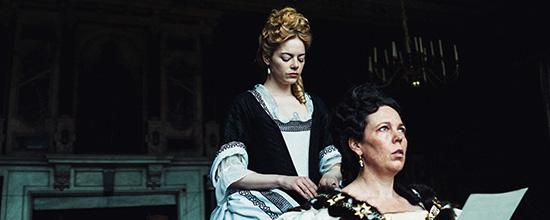
Love is a battlefield, as Pat Benatar once opined—a cliche that can also convey how love and sex, though not necessarily mutually inclusive, are never neutral. Those acts and feelings are political. A kiss is never just a kiss, and in Yorgos Lanthimos’s The Favourite, massaging someone’s leg, one person standing and the other on their knees, is not just a massage. From a fiendishly barbed screenplay by Deborah Davis and Tony McNamara (this is the first film of Lanthimos’s not co-written by him), The Favourite is about ailing, naïve, fussy Queen Anne (Olivia Colman)—ruler of Great Britain from 1702 to 1707—who acts like a wanton child (or is she treated like a child?) and submits most of her power and leadership duties to her “favourite,” Lady Sarah Churchill, Duchess of Marlborough (Rachel Weisz). This is convenient for Lady Sarah, who uses this opportunity for political strategy, swaying the Queen’s Tory-like politics to her own Whiggian politics, despite the battles she must carry on in court regularly (particularly against Robert Harley, a Tory, played by Nicholas Hoult). Her role as the Queen’s right-hand woman is as emotionally exhausting as it is politically fulfilling; while pushing for higher land taxes in order to finance an ongoing war with France, she is expected to quell the Queen’s many insecurities and neuroses. When Sarah’s distant cousin, and former lady herself, Abigail Hill (Emma Stone) lands on the steps of the palace, Abigail realizes she, too, can strategize to climb her way back to the top, even if it means pushing Sarah aside at all costs.
Weisz and Stone are well-equipped as foils, and it is within their precision in comic timing, calculation (the film features the best hand job scene since The Master) and volleying passions that the film is able to ground their presences in the same kind of melancholy resignation as Anne’s. Cinematographer Robbie Ryan uses fisheye and wide angle lenses, bending the interior architecture like the women’s allegiances and truths, to unsettling effect. Arguably, Queen Anne is, at heart, an optimist, living in a world in which affection and vulnerability can be depoliticized, not tied to class or royalty or nationhood. This detachment from the reality of the varying power dynamics and spectacles around her and her court—and her forced confrontation with the nature of the quasi-love triangle—gives The Favourite its beating broken heart. Rather than being concerned with historical authenticity (Sandy Powell’s costumes are gorgeously anachronistic), Lanthimos gestures towards an emotional reality that posits the lover and the loved as soldiers, capable of being a casualty in what each party believes is a greater cause. What a blazing and burning feat of melodrama. —Kyle Turner
62. Green Room (2016)
Director: Jeremy Saulnier

What’s perhaps most refreshing in Green Room is writer-director Jeremy Saulnier’s lack of interest in the kind of moralizing that made his last film, Blue Ruin, ultimately seem conventional. Instead, Saulnier simply presents us this scenario without feeling the need to lard it up with anything as cumbersome as topical commentary or moral ambiguity. He proceeds to wring as much tension and suspense from its pulpy retro plot as possible, adding a few entertaining grace notes along the way, which can best be seen in its performances. In the ensemble-based Green Room, Saulnier revels in the contrasts of personalities and styles: band bassist Pat’s (Anton Yelchin) Bill Paxton-like desperation, for instance, set alongside the weary, near-drugged-out deadpan of Amber (Imogen Poots), a friend of the woman whose murder sets off the film’s violent chain of events; or the imperial calm of Darcy (Patrick Stewart), the ruthless leader of the band of white supremacists who attempt to kill Pat, Amber and the rest. It’d be a stretch to call these characters three-dimensional, but nevertheless, under Saulnier’s writing and direction, they all manage to stand out just enough as individuals for us to become emotionally involved in their fates. Meanwhile, Saulnier supports these characters and plot turns with filmmaking that is remarkable for its economy and patience. DP Sean Porter gets a lot of mileage out of the cramped quarters and grimy lighting of the bar, lending its wide (2.35:1) frames an appropriately nightmarish feel amidst many suspenseful set pieces. In those ways, the lean, mean Green Room stands as one of the best B-movie genre exercises in quite some time. —Kenji Fujishima
61. The Beach Bum (2019)
Director: Harmony Korine
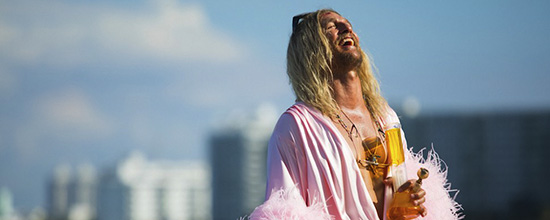
Witness Matthew McConaughey, transcending. Revel in it, because this has got to be as high as he goes. As Moondog, the opposite, arch nemesis perhaps, to the Matthew McConaughey of the Lincoln commercials—on TV the interstitial, nonchalant pool shark and connoisseur of fine leather everything, a man to whom one whispers courteously, in reverence between network shows—Matthew McConaughey realizes the full flat circle of his essence. The actor bears multitudes, and they all converge upon the befuddled Moondog, consummate inhuman and titular hobo of the southern sands of these United States. One could claim that Moondog’s hedonism represents a moral imperative to consume all that’s truly beautiful about life, and Moondog says as much even if he’s plagiarising D.H. Lawrence (which he admits to his best friend Lingerie, who’s carried on a long-time affair with Moondog’s wife, and who’s played by Snoop Dog in a career best performance). Speaking of Lawrence, Martin also gives a career-best performance as Captain Wack, dolphin lover; the film slides effortlessly into absurdity. One could claim, too, that Moondog’s little but a self-destructive addict somehow given a free pass to circumvent basic human responsibility altogether. One could claim that director Harmony Korine doesn’t believe in basic human responsibility anyway. He doesn’t claim much in the way of explicating Moondog’s whole way of being, doesn’t reserve any judgment for the man’s mantra and blissful lurch towards oblivion. Or annihilation. The uniform for which is casual, including JNCO jeans, brandished by Flicker (Zac Efron), with whom Moondog escapes the court-mandated rehab that seemingly does nothing to pierce the armor of intoxication Moondog’s spent his life reinforcing. Whether he’s protecting himself from any serious human connection or from the crass hellscape of capitalistic society—whether he’s deeply grieving a tragedy that occurs halfway through The Beach Bum, Harmony Korine’s masterpiece of feeling good in the face of feeling the worst, or avoiding all feeling completely—he’s still a bad dad. Or he’s an artist. Or a saint. Or he’s from a different dimension, as his wife (Isla Fisher) explains to their daughter, as she most likely always has, against a breathtaking vista followed not long after by a heartbreaking sunset, both photographed by Benoît Debie, in Miami of all places, all magnificent and hollow, the film a hagiography for the End of History. —Dom Sinacola
60. 12 Years a Slave (2013)
Director: Steve McQueen

Brad Pitt further solidifies his chances at one day being Mayor of New Orleans—here as producer and actor (albeit, in a small but pivotal role)—but this is Solomon Northrup’s (true) story. Chiwetel Ejiofor is quietly galvanizing as Northrup, a free black man in Upstate New York circa 1841 who is drugged, kidnapped and sold into slavery. The next dozen years may as well be a million in English filmmaker Steve McQueen’s controlled, unflinching production, as Northrup adapts to survive from plantation to plantation, master to master. McQueen and cinematographer Sean Bobbitt employ a fluid, formal aesthetic that contrasts the hypocrisy of Northrup’s owners, such seething inhumanity cloaked beneath their genteel, Bible-quoting propriety. It sickens on a visceral level. Lingering on the daily routines of slave life in the Deep South, 12 Years a Slave spares no sight. The film immerses viewers so thoroughly in the ugliness of history that the plain grace of its environs—as when Lupita N’yongo’s Patsey crafts corn-husk dolls in the cotton fields—is almost lost. A wide shot of moss canopies and children playing, scored by singing birds and chirping crickets, would be bucolic were it not for the man slowly being lynched from one of its giant oak trees. Shot on several properties throughout Louisiana near the real Northrup’s enslavement, 12 Years is a reminder of unchecked depravity whose vestiges resonate in more ways than one. —Amanda Schurr
59. Holy Motors (2012)
Director: Leos Carax

Who knew it would be Kylie Minogue to remind us exactly why we go to the movies at all? Delicately singing (“Who are we?”), Minogue walks around in what looks like an abandoned garage, mannequin bodies strewn on the floor, late into Leos Carax’s Holy Motors, his bizarre French morsel about cinema, and acting, and the worlds to which we are transported, and the realities from which we cannot necessarily escape. Denis Lavant plays an actor (or does he?), shapeshifting from one part to the next with rigor, ambling from scene to scene—one of which features Minogue as someone who may have been a lover of his—as the film takes on an anthological shape. Carax and Denis stuff nearly every genre into their entrancing film while keeping it cohesive, all the while gamely tearing down the walls between film and audience, suggesting that who we are is only a matter of what we see. —Kyle Turner
58. Certified Copy (2010)
Director: Abbas Kiarostami

Certified Copy is opaque, but accessible. It is marked by distance, and yet it is intimate, warm and brimming with empathy. It’s also playful, not comical or lighthearted, mind you, but tongue-in-cheek. You may surmise as much by the title. Certified Copy: “real fake.” Kiarostami wasn’t having a laugh or making a joke, but he was inviting us to keep ourselves open to the experience of his film, at once a tale told in vérité style and a wholly constructed drama made on a personal scale. His two leads, Juliette Binoche and James Shimell, respectively play an innominate antiques dealer and author James Miller, the latter of whom has traveled to Tuscany to talk about his book, titled Certified Copy, which seeks to argue that authenticity is irrelevant to art. Binoche, credited as “elle,” or “she,” and James meet, go for a jaunt together, talk, talk more and continue talking—as they talk, their relationship transforms before our eyes. Are they really strangers? Are they actually husband and wife, as strangers presume? Is the film smirking at us while we scratch our heads in puzzlement? (If yes, was Kiarostami smirking, too?) The joy of Certified Copy is in its mutability. You can watch it ten times and read half as many interpretations out of it. What never changes from one viewing to the next is its sheer beauty, found in Kiarostami’s visual poetry, and in Binoche and Shimell’s wrenching, heartfelt and unequivocally genuine performances. If you don’t know what to believe, believe in the film’s observations about human relationships. They look simple on the outside. On the inside, they’re as mercurial as the movie itself. —Andy Crump
57. The Handmaiden (2016)
Director: Park Chan-wook
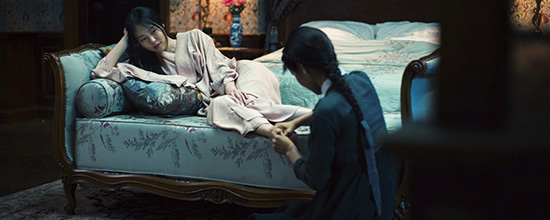
There are few filmmakers on Earth capable of crafting the experience of movies like The Handmaiden so exquisitely while maintaining both plot inertia and a sense of fun. (Yes, it’s true: Park has made a genuinely, often surprisingly, bleakly funny, picture.) The film begins somberly enough, settling on a tearful farewell scene as Sook-hee (Kim Tae-ri) is carted off to the manor of the reclusive and exorbitantly rich aristocrat Kouzuki (Cho Jin-woong), where she will act as servant to his niece, Lady Hideko (Kim Min-hee). But Sook-hee isn’t a maid: She’s a pickpocket working on behalf of Fujiwara (Ha Jung-woo), a conman scheming to get his mitts on Hideko’s assets. (That’s not a euphemism. He only wants her for her money.)
The reveal of Sook-hee’s true intentions is just the first of many on The Handmaiden’s narrative itinerary. Park has designed the film as a puzzle box where each step taken to find the solution answers one question while posing new ones at the same time. But it’s in the sex scenes between the two Kims that Park shows the kind of filmmaker he really is. The scenes are steamy, but in each we find a tenderness that invites us to read them as romance rather than as pornography. We’re not conditioned to look for humanity in pantomimes of a sexually explicit nature, but that’s exactly when The Handmaiden is at its most human. There’s something comforting in that, and in Park’s framing of deviance as embodied by the film’s masculine component. We don’t really need him to spell that out for us, but the message is welcome all the same. —Andy Crump
56. Evolution (2015)
Director: Lucile Hadžihalilovic

Hadžihalilovic’s gorgeous enigma is anything and everything: creature feature, allegory, sci-fi headfuck, Lynchian homage, feminist masterpiece, 80 minutes of unmitigated gut-sensation—it is an experience unto itself, refusing to explain whatever it is it’s doing so long as the viewer understands whatever that may be on some sort of subcutaneous level. In it, prepubescent boy Nicolas (Max Brebant) finds a corpse underwater, a starfish seemingly blooming from its bellybutton. Which would be strange were the boy not living on a fatherless island of eyebrow-less mothers who every night put their young sons to bed with a squid-ink-like mixture they call “medicine.” This is the norm, until Nicolas’s boy-like curiosity begins to reveal a world of maturity he’s incapable of grasping, discovering one night what the mothers do once their so-called “sons” have fallen asleep. From there, Evolution eviscerates notions of motherhood, masculinity and the inexplicable gray area between, simultaneously evoking anxiety and awe as it presents one unshakeable, dreadful image after another. —Dom Sinacola
55. Faces Places (2017)
Directors: Agnes Varda and JR
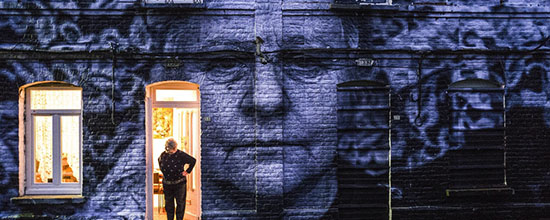
One of the decade’s best road movie was this delightful French film from New Wave pioneer Agnès Varda and photographer JR. The odd-couple contrast between co-directors is physically striking—she’s a woman, he’s a man; he’s much taller and younger than she—but they’re aligned in their desire to document the lives of everyday French citizens, taking oversized photos of the people they meet and plastering them on the sides of buildings to commemorate their specialness. Faces Places is very much in the style of Varda’s most recent documentaries, such as The Gleaners and I and The Beaches of Agnès, which chart how art and life weave inextricably together, but at 89, she doesn’t have the same stamina she once did. That fact lends added poignancy to a movie that, in part, is about the fragility of everything: small towns, photographs, loved ones, long friendships fading into disrepair. With JR as her co-conspirator, the Varda we see in Faces Places stands as a model for how to carry oneself through the world: with humor, humility and grace. —Tim Grierson
54. Raw (2016)
Director: Julia Ducournau
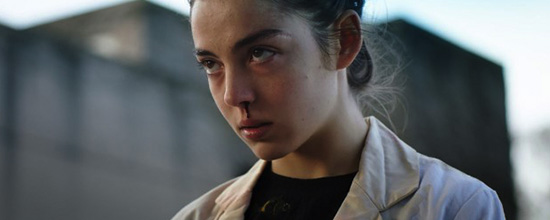
Julia Ducournau’s Raw is a “coming-of-age movie” in that the film’s protagonist, naive incoming college student Justine (Garance Marillier), comes of age over the course of its running time. She parties, she breaks out of her shell, she learns about who she really is as a person on the verge of adulthood. But most kids who come of age in the movies don’t realize that they’ve spent their lives unwittingly suppressing an innate, nigh-insatiable need to consume raw meat. “Hey,” you’re thinking, “that’s the name of the movie!” Allow Ducournau her cheekiness. More than a wink and nod to the picture’s visceral particulars, Raw is an open concession to the harrowing quality of Justine’s grim blossoming. Nasty as the film gets, and it does indeed get nasty, the harshest sensations Ducournau articulates here tend to be the ones we can’t detect by merely looking: Fear of feminine sexuality, family legacies, popularity politics and uncertainty of self govern Raw’s horrors as much as exposed and bloody flesh. It’s a gorefest that offers no apologies and plenty more to chew on than its effects. —Andy Crump
53. Your Name (2016)
Director: Makoto Shinkai

Much like his contemporary Mamoru Hosoda, Makoto Shinkai is a director frequently championed as the “new” Hayao Miyazaki in any conversation surrounding who will succeed him as heir apparent. This comparison however, much like in the case of Hosoda, ends up being frustratingly reductionist in its appraisal of both directors. Shinkai’s films are not light-hearted family adventures or archetypal pillars of anime canonicity, but tense, melancholic odes to contemporary Japanese society that highlight the ways in which physical, emotional and temporal distance inform the shape and course of human relationships. His fifth feature film, Your Name, exercises the director’s predilection for “star-crossed love” to its narrative and thematic endpoint, situating the budding romance of the film’s protagonists at the epicenter of an astrological event of nothing shy of life-or-death consequence. The recipient of over a dozen awards, in addition to becoming the highest-grossing anime film of its time, Your Name is Shinkai’s most critically and commercially successful production to date, a masterful film that ranks among the very best the medium has to offer. —Toussaint Egan
52. At Berkeley (2013)
Director: Frederick Wiseman

Frederick Wiseman is a national treasure, a filmmaker who has spent his career diligently and perceptively documenting institutions, whether they be mental hospitals (Titicut Follies) or French burlesque clubs (Crazy Horse). At Berkeley is one of his best, and one of his longest: a four-hour examination of the University of California at Berkeley that chronicles everything from administrative meetings to classroom lectures. With Wiseman’s trademark restraint—rather than interviewing his subjects, Wiseman simply stands back and observes them in their natural habitat—he asks us to consider the college experience as a microcosm for the world with its warring philosophies and agendas. And if Wiseman’s thesis is accurate, we live in a pretty remarkable world. —Tim Grierson
51. Drive (2011)
Director: Nicolas Winding Refn
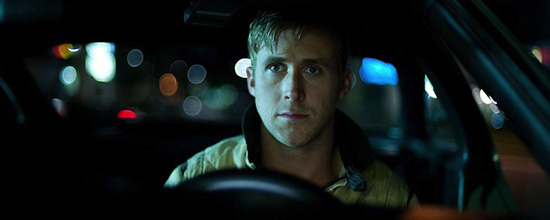
Drive is the movie that makes me think I’m a Nicolas Winding Refn fan: all of the director’s appetites sublimated into something that indulges the viewer as much as it indulges its maker. I’ve watched Refn’s other stuff on Drive’s merit and liked none of it. Nonetheless, I’m a Refn fan, because the things that drive me crazy about his other work (stylistic posturing, stilted dialogue, general wankery, etc.) are things that click into the gear teeth of Drive so that it can idle, hum, rev and roar to life. Besides that, the set-pieces are simple and perfectly realized, as are the characters, with textured supporting turns from Oscar Isaac, Carey Mulligan, Bryan Cranston and Albert Brooks. Most of Refn’s stuff is about repression, his protagonists like aliens to the societies with which they’re forced to engage. Ryan Gosling’s nameless driver is pure archetype, but unlike Gosling’s parody of his Drive performance in the subsequent Only God Forgives, there is something about his Driver that resonates, that makes us want to believe in him even as he’s established as a pawn for dangerous men. We crave “a real hero,” as the soundtrack at one point highlights with neon marker; Drive kens what we long to see in human nature. It knows that to love is to sacrifice; it’s also one of the more affecting depictions of a good person finding out that he’s good by virtue of human connection—while at the same time understanding that process alienates him even further from the world. The Driver seems inert on his surface but the action of the film speaks very much otherwise. For once in his oeuvre, Refn finds a way to bring his protagonist’s repression and catharsis together in a final grace note. And if there’s one thing we need more of in our entertainment and in our lives, it’s grace. —Chad Betz
50. It Follows (2015)
Director: David Robert Mitchell
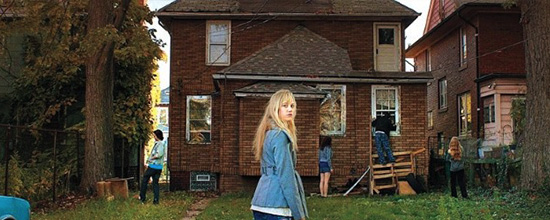
The specter of Old Detroit haunts It Follows. In a dilapidating ice cream stand on 12 Mile, in the ’60s-style ranch homes of Ferndale or Berkley, in a game of Parcheesi played by pale teenagers with nasally, nothing accents—if you’ve never been, you’d never recognize the stale, gray nostalgia creeping into every corner of David Robert Mitchell’s terrifying film. But it’s there, and it feels like SE Michigan. The music, the muted but strangely sumptuous color palette, the incessant anachronism: In style alone, Mitchell is an auteur seemingly emerged fully formed from the unhealthy womb of Metro Detroit. Cycles and circles concentrically fill out It Follows, from the particularly insular rules of the film’s horror plot, to the youthful, fleshy roundness of the faces and bodies of this small group of main characters, never letting the audience forget that, in so many ways, these people are still children. In other words, Mitchell is clear about his story: This has happened before, and it will happen again. All of which wouldn’t work were Mitchell less concerned with creating a genuinely unnerving film, but every aesthetic flourish, every fully circular pan is in thrall to breathing morbid life into a single image: someone, anyone slowly separating from the background, from one’s nightmares, and walking toward you, as if Death itself were to appear unannounced next to you in public, ready to steal your breath with little to no aplomb.
Initially, Mitchell’s whole conceit—passing on a haunting through intercourse—seems to bury conservative sexual politics under typical horror movie tropes, proclaiming to be a progressive genre pic when it functionally does nothing to further our ideas of slasher fare. You fornicate, you find punishment for your flagrant, loveless sinning, right? (The film has more in common with a Judd Apatow joint than you’d expect.) Instead, Mitchell never once judges his characters for doing what practically every teenager wants to do; he simply lays bare, through a complex allegory, the realities of teenage sex. There is no principled implication behind Mitchell’s intent; the cold conclusion of sexual intercourse is that, in some manner, you are sharing a certain degree of your physicality with everyone with whom your partner has shared the same. That he accompanies this admission with genuine respect and empathy for the kinds of characters who, in any other horror movie, would be little more than visceral fodder for a sadistic spirit, elevates It Follows from the realm of disguised moral play into a sickly scary coming-of-age tale. Likewise, Mitchell inherently understands that there is practically nothing more eerie than the slightly off-kilter ordinary, trusting the film’s true horror to the tricks our minds play when we forget to check our periphery. It Follows is a film that thrives in the borders, not so much about the horror that leaps out in front of you, but the deeper anxiety that waits at the verge of consciousness—until, one day soon, it’s there, reminding you that your time is limited, and that you will never be safe. Forget the risks of teenage sex, It Follows is a penetrating metaphor for growing up. —Dom Sinacola
49. Parasite (2019)
Director: Bong Joon-ho
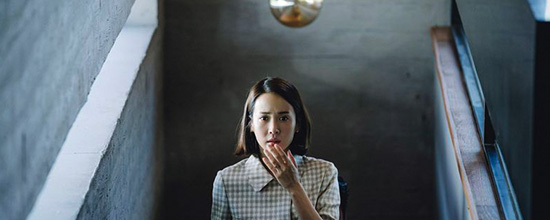
“That’s so metaphorical,” exclaims the son of the Kim family, Ki-woo (Choi Woo-shik), holding with childlike reverie a large rock sculpture, a wooden base solidifying its aesthetic and cultural value. The pointedly nice object stands apart from the basic keepsakes in the Kims’ fairly dingy and cramped home, inhabited by unemployed father, Ki-taek (Song Kang-ho), unemployed mother, Chung-sook (Jang Hye-jin), and not-in-art-school daughter, Ki-jeong (Park So-dam). Brought to them by Ki-woo’s wealthy friend, the rock is supposed to foretell great financial wealth to whatever family keeps it in their home. Irritated at their own situation, at the lack of space, at the lack of immediate value the rock has, Chung-sook mutters, “Food would have been better.”
In Bong Joon-ho’s Parasite, those that live with a stark awareness of inequality operate with a sense of cognitive dissonance. It’s this paradox of thought that allows Ki-woo to be both naively worshipful towards what a rock sculpture could bring them, but also understand, at other times, that wandering around isn’t how one ascends into power. At the behest of said wealthy friend, he becomes the English tutor for the daughter, Da-hye (Jung Ji-so), of the grotesquely affluent Park family: astute patriarch (Lee Sun-kyun), dim matriarch (Cho Yeo-jeong), manic artsy son, Da-song (Jung Hyun-joon), and severely loyal housekeeper, Moon-gwang (Lee Jung-eun). But as the Kim and Park families grow increasingly closer, both the differences and similarities between them blur beyond discernment.
Bong’s interest in income inequality and class has spanned the majority of his career, examining the ways it impacts the justice system (Memories of Murder, Mother), the environment (Okja) and the institutions responsible for both the exacerbation of wealth inequality and failing to protect those most marginalized by that inequality (Snowpiercer, The Host). For Parasite, Bong takes a slightly different angle—he’s no less focused on inequality’s consequences, but here he sees how class as performance manifests, particularly when people are plucked from one echelon of society and put in another. As we watch both families act in different, but intersecting, pieces of social/anthropological theatre, Bong cuts through their mutual hunger, and what ultimately and tragically separates them, with a jaundiced eye and an acidic sense of humor. Laughing during Parasite feels like choking on rust. (Cho, especially, finds the perfect amount of absurdity as the somewhat doltish mother, truly a testament to rich ladies being easily knocked over by a feather.) But Bong is not interested in metaphor, and not the kind written on rocks. Even through its absurdist, bleakly satirical lens, Bong understands that social inequity is not just theatre, but lived experience. Sometimes the rock is just a shit-stained rock. —Kyle Turner
48. Phantom Thread (2017)
Director: Paul Thomas Anderson
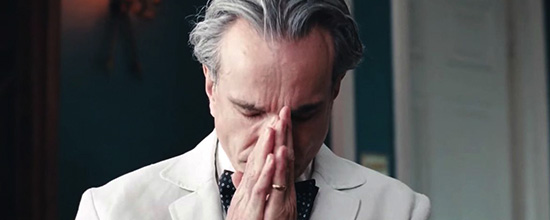
Phantom Thread is a movie that is so wonderfully made, so meticulous in its construction, so deeply felt in execution, that you can almost overlook how prickly and scabrous it is. Ludicrously luscious to watch, the film is in large part about how self-centered and inflexible the world of relationships can be, how we can only give up so much of ourselves and it’s up to our partner to figure out how to deal with that, if they want to at all.
Daniel Day-Lewis plays Reynolds Woodcock, a world-famous dressmaker who clothes celebrities, royalty and, sometimes to his chagrin, déclassé wealthy vulgarians. Almost everything that doesn’t meet his exacting standards is vulgarian, until one day while in the English countryside, Reynolds comes across a waitress named Alma (Vicky Krieps) who both meets Reynolds’ physical requirements (specifically so he can make dresses for her) and has a certain pluck that he instantly finds fascinating. Both of the principals of Phantom Thread are absurd and insane in their own ways, and one of the many thrills of the film is watching them bounce off each other, and then collide again.
It’s the oddest little love story, so odd that I’m not even sure it’s about love at all. My colleague Tim Grierson said this first, but it’s too good an observation to ignore: This movie is in large part about the absolute unknowability of other people’s relationships. From the outside, it makes no sense that Reynolds and Alma would have this sort of connection with each other; it’s difficult to tell what either person is getting out of it. This is an uncompromising movie about two uncompromising people who try to live with one another without losing too large a part of themselves, and the sometimes extreme lengths they will go to get their way. What’s unfathomable about it is also what makes it so powerful. —Will Leitch
47. Melancholia (2011)
Director: Lars von Trier
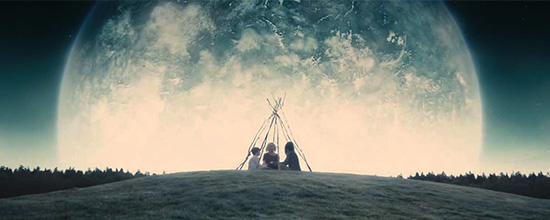
If you want a really, really disturbingly beautiful apocalypse, you can’t go wrong with Lars von Trier. Melancholia is the second of a trilogy of films in which the director dives into the nature of depression. It revolves around two sisters, Justine (Kirsten Dunst) and Claire (Charlotte Gainsbourg)—after a staccato series of prologue images set to Wagner (if you’ve ever experienced severe depression you’ll recognize the choppy, distanced, “underwater” quality of this first section), we open on Justine’s wedding reception. There is something seriously wrong with these people. Or is there? It seems like Justine’s boss is actually harassing her for ad copy in the middle of her own wedding toast. It seems like her father is a raging narcissist and her mother is “honest” in a way that makes you want to never take a phone call from her, ever. Everything seems off. And that’s before anyone realizes a runaway planet called Melancholia might be on a collision course with Earth. —Amy Glynn
46. Weekend (2011)
Director: Andrew Haigh

Not all hookups are the same, as far as the details go—who came onto whom, who hosted, what they wore, what they did, if they got what they wanted—but, perhaps at their core, hookups really are the same, at least regarding what both parties want out of them. That’s what Glen (Chris New), an ambitious art student, thinks as he asks his one night stand Russell (Tom Cullen) to recount the previous evening’s adventures to a tape recorder. To Glen, everyone, particularly gay and queer men, use sex as a form of projection: who they want to be and who they want the other person to be, all swept up in sweat and heat. Even as Russell, a little more ambivalent about his gayness than Glen (who will gladly rant about heteronormativity in a pub), reluctantly speaks into the device, something rumbles within him. The two are drawn to one another and they will change one another’s senses of personal history and identity in just a couple of days, their encounter lasting longer than they initially thought, but far too short regardless.
Andrew Haigh, once an assistant editor on films like Gladiator and Black Hawk Down, digs his nails into queer time and history, making a little more than 48 hours feel both like it can contain a universe of intimacy and like it’s the source of incredible urgency. Haigh luxuriates in long conversations and unbroken shots, his camera growing closer to his characters as they, too, foster a bond with one another. In this short span of time, Glen and Russell unpack what modern gay white working class identity has meant, means and will mean to them and to the society around them. As they find themselves part of a history of queerness and queer politics, their sense of stakes becomes more personal, more vital. With incomparable tenderness and beauty, Weekend freezes the world around them, making their brief encounter last forever. —Kyle Turner
45. Ida (2013)
Director: Pawel Pawlikowski
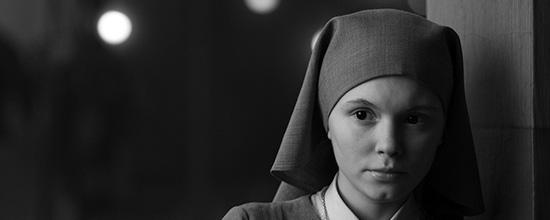
A compelling examination of how the past can shape us even when we don’t know anything about it, Pawel Pawlikowski’s quiet Polish film takes place in the 1960s, when World War II has ended but still grips people’s lives. In the title role, Agata Trzebuchowska—with a well-tuned balance between naivete and curiosity despite being a non-professional actor—plays a nun-in-training who learns that her family was Jewish and killed during Nazi occupation. She embarks on an odyssey to find their graves with her cynical, alcoholic aunt Wanda (Agata Kulesza), former prosecutor for the communist government. The relationship between the two characters grows more and more complex as they go deeper down the rabbit hole of their family’s past. Shot in black-and-white and academy ratio (1.37:1) by cinematographers ?ukasz ?al and Ryszard Lenczewski, Ida uses its frame to distinct effect, often resigning characters to the lower third of the screen. The effect can be unsettling, but intriguing; that space could contain the watchful power of Ida’s lord, but it could also be nothing more than an empty void. After a life of certitude, Ida has to decide for herself. —Jeremy Mathews
44. The Turin Horse (2011)
Directors: Béla Tarr, Ágnes Hranitzky
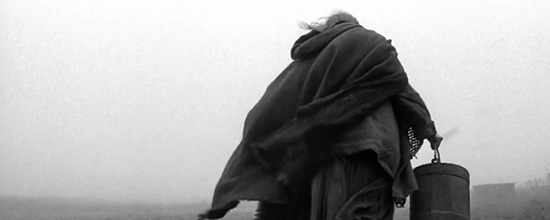
“During these 34 years of filmmaking, I’ve said everything I want to say. I can repeat it, I can do a hundred things, but I really don’t want to bore you. I really don’t want to copy my films.” That’s how Béla Tarr explained his decision to retire from feature filmmaking after The Turin Horse, which has a finality to it that ends his illustrious career with an exclamation point. Actually—make that a question mark, for this beautiful drama (co-directed by his wife Ágnes Hranitzky), is nothing but ambiguity and uncertainty. It tells of two impoverished potato farmers—a father (János Derzsi) and his daughter (Erika Bók)—struggling to survive in a harsh countryside that seems entirely devoid of other people. The Turin Horse is set in the 19th century, but it might as well be doomsday: The bleak black-and-white images and the actors’ stony faces convey everything that needs to be said about mortality. And if Tarr said everything he needed to say with this final masterpiece, why say it again? —Tim Grierson
43. Personal Shopper (2016)
Director: Olivier Assayas
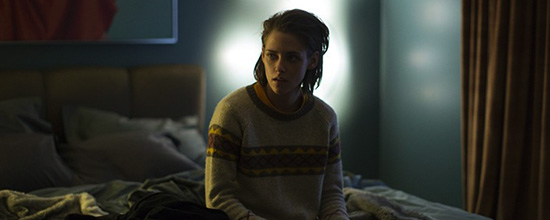
The pieces don’t all fit in Personal Shopper, but that’s much of the fun of writer-director Olivier Assayas’s enigmatic tale of Maureen (Kristen Stewart, a wonderfully unfathomable presence), who may be in contact with her dead twin brother. Or maybe she’s being stalked by an unseen assailant. Or maybe it’s both. To attempt to explain the direction Personal Shopper takes is merely to regurgitate plot points that don’t sound like they belong in the same film. But Assayas is working on a deeper, more metaphorical level, abandoning strict narrative cause-and-effect logic to give us fragments of Maureen’s life refracted through conflicting experiences. Nothing happens in this film as a direct result of what came before, which explains why a sudden appearance of suggestive, potentially dangerous text messages could be interpreted as a literal threat, or as some strange cosmic manifestation of other, subtler anxieties. Personal Shopper encourages a sense of play, moving from moody ghost story to tense thriller to (out of the blue) erotic character study. But that genre-hopping (not to mention the movie’s willfully inscrutable design) is Assayas’s way of bringing a lighthearted approach to serious questions about grieving and disillusionment. The juxtaposition isn’t jarring or glib—if anything, Personal Shopper is all the more entrancing because it won’t sit still, never letting us be comfortable in its shifting narrative. —Tim Grierson
42. Paddington 2 (2017)
Director: Paul King
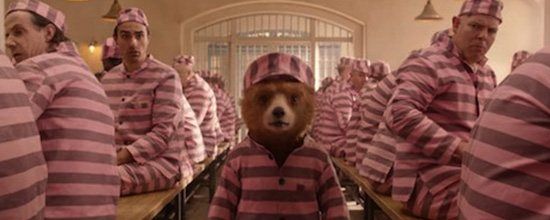
Paddington 2 picks up where its predecessor left off, with Paddington Brown (né Bear and voiced by Ben Whishaw) living contentedly with his human family, played by Hugh Bonneville (Downton Abbey) and Sally Hawkins (The Shape of Water), joined by that British A-Lister of yore Hugh Grant, dramatic heavyweight Brendan Gleeson, and many others. A simple, commendable desire to find a good gift for his Aunt Lucy (currently spending her days in a nice retirement home for bears in Lima, Peru, natch) leads Paddington to set his eyes on a certain antique pop-up book as the perfect present. When that scoundrel and fading thespian Phoenix Buchanan (Grant) also sets his sights on the same book, well, hijinks, misunderstandings and adventure ensue.
Paddington 2 reminds us how difficult it can be to pull off a brightly tempered, gently moving children’s movie by doing exactly that, and doing it so well. Director Paul King’s film is sweet, yet not saccharine. It caters to the humor of children without pandering or talking down to them, and all the while cast and crew take great care to place the narrative solidly in a keenly imagined setting that’s filled with as many stylistic flourishes as a Wes Anderson film. As a result, Paddington 2 is full of far-fetched premises, farcical sequences and, as expected, an intense appreciation of marmalade. It is also a delight to child and adult alike. —Michael Burgin
41. The Tree of Life (2011)
Director: Terrence Malick

In his big ole windy essay for the Criterion Collection’s edition, Kent Jones writes of The Tree of Life as if it is the climax of not just Terrence Malick’s oeuvre, but of filmmaking itself—the art, the physical action, the manifestation of dreams. Undoubtedly, Malick’s fifth film in more than 40 years is a masterful achievement of scale, an outpouring of awe and wonder and existential melancholy which Jones can only compare to the work of directors like Stanley Kubrick, David Lean, Robert Bresson and other white, Christian-leaning, cisgender auteurs deemed the truly transcendent cartographers of the great beyond (by people like Jones). It’s a lot to stomach; it’s OK to wonder if Jones has actually seen a movie since 2011.
Still, the majesty of The Tree of Life isn’t in how audaciously it claims the whole of existence as its setting, but in how it juxtaposes, with weight and reverence, two kinds of infinity: the incomprehensibly large and the deeply, intimately small. It’s about the life of Jack, played by Sean Penn as a vacant adult and Hunter McCracken as a quiet boy with the world on his shoulders; it sets that life against nothing less than the birth and death of the universe—against nothing more than a dream, perhaps, of a man losing his grip on reality. Jack’s mother (Jessica Chastain) and father (Brad Pitt) “always wrestle within” him, representing the two poles—of grace and nature, respectively, that pull us in opposite directions, forever and ever, amen. Between those two poles is the creation of everything, literalized by Malick over the course of 20-something minutes, rendered in impressionistic glimpses of the cosmos and of dinosaurs stepping on weaker dinosaurs’ faces. And yet, despite all this grandeur, the most moving moments of The Tree of Life are brief and minute: the father mourning his dead son, Jack’s brother, by cursing his own authoritarian, asphyxiating neediness; the father hugging his dead son in the film’s final sequence; the father’s eyes dropping when he hears that his son is dead. The magnanimity of the mother reflects the hard-won empathy of the father; without the hugeness of Malick’s vision, the tiniest bits wouldn’t feel so heart-wrenching.
Of course, the real treasure of Criterion’s release is Malick and cinematographer Emmanuel Lubezki’s new extended edition, which adds 50 minutes of previously unseen footage, crafting an entirely different viewing experience. As is the case with the theatrical cut, it’s difficult and entirely useless to describe how one abundance is different from another, though the feeling one derives from this recent version is two-fold. That disparity of scale, between infinities, leans more thoughtfully toward the small in this new version, better justifying the hugeness Malick tries to capture, wrapping the narrative in on itself so that there is only one infinity, the large and the tiny equally mind-boggling. But in adding so much more of Jack’s young life, Malick practically argues against Sean Penn’s inclusion at all. Regardless, the extended edition is just as essential as its earlier incarnation, one inextricable from the other. —Dom Sinacola
40. Burning (2018)
Director: Lee Chang-dong
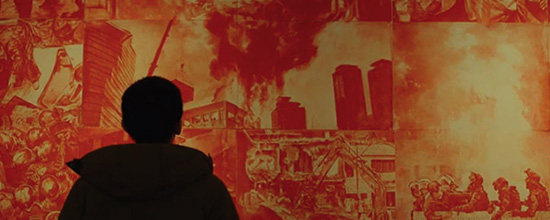
Eight years after critical hit Poetry, Korean director Lee Chang-dong translates a very brief and quarter-century old story by Japanese master novelist Haruki Murakami into something distinctly Korean, distinctly contemporary (spoiler warning: there’s a news clip of Trump) and distinctly Lee Chang-dong. But also: into something that utterly captures the essence of Murakami. Lee Jong-su (Ah-in Yoo) is an aspiring young writer who quits his menial job to tend to his incarcerated father’s farm (a storyline the film takes from William Faulkner’s short story “Barn Burning,” after which Murakami—as referential as ever—named his own story). Jong-su encounters a childhood acquaintance, Shin Hae-mi (Jong-seo Joon), who apparently he interacted with just once as a kid by calling her “ugly.” Anyways, Hae-mi’s all grown up and claims to have had plastic surgery; she and Jong-su strike up a relationship. It’s unusual and unnerving: Hae-mi is erratic and inscrutable, possibly a compulsive liar, while Jong-su can barely do more than gape and breathe. Nonetheless, Lee couches this set-up in exquisite details and rich observation. Spontaneously (as is her wont), Hae-mi asks Jong-su to watch her perhaps imaginary cat while she takes a trip to Africa to learn about physical (“small”) hunger and existential (”great”) hunger. That’s not critical embellishment, that’s an actual plot-point. When Hae-mi returns to Korea, she—to Jong-su’s suppressed chagrin—has a rich new boyfriend in tow. His name is Ben, and he’s played as a bored but semi-cheerful sociopath by Steven Yeun (who has never been better).
The way the film’s story flows into uncharted terrain is part of its spell. Something of a love triangle develops, some disturbing idiosyncrasies are revealed (not just about Ben) and some bad stuff happens. Murakami writes about that which he cannot grasp; he embraces the ineffable, inhaling and exhaling a cloud of unknowing. So, too, does Burning, while also managing to give us Lee Chang-dong’s signatures: visual lucidity and artful morality. It’s the rare symbiotic triumph between singular source material and singular cinematic vision. And while the film is a slow-burn, it expands the meaning of the term: You might never quench the flames it sparks within you, flames that send fumes up and away to a thundering, obscuring cloud. —Chad Betz
39. Mission: Impossible – Ghost Protocol (2011)
Director: Brad Bird
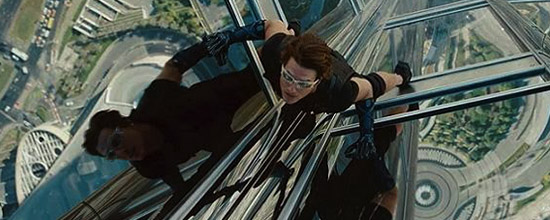
While Christopher McQuarrie continues to codify Tom Cruise as the asexual ubermensch of our action franchise dreams, it took an animator to realize what wonders could be unleashed when directing the superstar like one would a cartoon character. Tom Cruise can do things normal people can’t, maybe because normal people won’t, though Tom Cruise might just say that normal people don’t, the man’s career providing ample evidence that he believes he can do things normal people can’t because he does them. His impossible mission is himself; Brad Bird understood this. The fourth Mission: Impossible movie, then, is a testament to Tom Cruise’s logic, to having him do astounding things because he’s doing them, for us, to both show us what we could do if only we were doing it, and to entertain us, because he’s nothing if not a consummately entertaining performer. When Ethan Hunt (Cruise) clambers over the exterior of the Burj Khalifa, Bird captures Cruise with the open-faced awe of a director who can’t believe the malleable specimen he’s got in his grasp. When the Kremlin implodes with more than a hint of disaster porn footage, or when Ethan Hunt’s outrunning an all-consuming sandstorm, or when Ethan Hunt’s escaping from a maximum security prison in Moscow, Bird’s imagination spews from every spectacle, America’s favorite ridiculous leading man at the heart of it all, looking chiseled and genial but also like he doesn’t understand human touch. This is Cruise’s gift to Bird, and this is Bird’s gift to us, paying it forward. —Dom Sinacola
38. Dunkirk (2017)
Director: Christopher Nolan
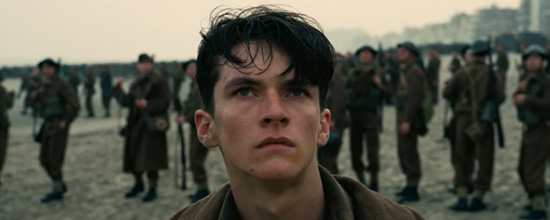
Dunkirk contains three storylines: “The Mole,” which takes place over a week and follows young British troops trying to get away from a Nazi-besieged Dunkirk; “The Sea,” a day in which a civilian man (Mark Rylance), his son (Tom Glynn-Carney) and the son’s friend (Barry Keoghan) take a boat out to fetch the stranded soldiers back to England; and “The Air,” one hour of British air force pilots engaging the German Stukas and bombers who are picking off both the soldiers on the beach and the boats that come for them. These three storylines, though taking place over very different time frames, are given equal footing. From its dread-drenched beginning, through a whole lot of harrowing middle, to its resonant conclusion, Dunkirk constantly intercuts between these three fragments of time, vivid recreations of different accounts of the same epochal event brought together to combine, spin off each other and then unfurl. Memories meticulously preserved, but also lost.
The cutting back and forth in time heightens the sense of disorientation for which Dunkirk strives in its depiction of war, but it also highlights textual connections (we see Cillian Murphy’s “Shivering Soldier” in the PTSD climax of his arc in “The Sea,” and in the next scene—from “The Mole” timeline—we see his composure as a commanding officer pre-PTSD), creates foreshadowing without having to indulge clichéd foreshadowing cues and allows the film to steadily build for over an hour to an extended sequence of catharsis. The film has perspective, but also respect for the dead and compassion for the past. It’s perhaps the most emotionally aware and honest of all of Christopher Nolan’s films—it is the wisest, while on the surface barely trying, for virtue of its minimal dialogue and scant exposition, which is a welcome change of pace not just from Nolan’s recent work but large-scale films in general. The ambivalence, the equal parts tragedy and triumph with which Dunkirk resounds, is not muted, but complete. And the non-linear weaving helps achieve this. Director Andrei Tarkovsky wrote a book about his philosophy towards filmmaking, calling it Sculpting in Time; Nolan, on the other hand, doesn’t sculpt, he deconstructs. He uses filmmaking to tear time apart so he can put it back together as he wills. —Chad Betz
37. Her (2013)
Director: Spike Jonze
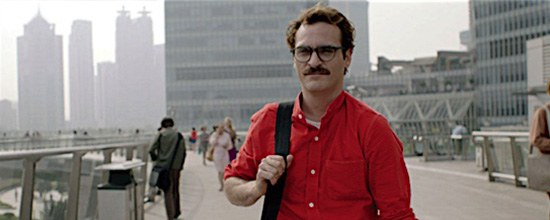
Spike Jonze’s colossal talent was far too great to remain trapped in MTV’s orbit; that became immediately clear when his breakout feature-length debut, Being John Malkovich, earned him an Oscar nod for Best Director. Following that minor postmodern masterpiece, he and screenwriter Charlie Kaufman continued their journey into solipsism with the hilariously unhinged Adaptation. As challenging, yet fun and accessible as Kaufman’s screenplays are, Jonze’s Her answers any lingering questions of whether those two movies’ (well-deserved) acclaim sprang solely from the power of Kaufman’s words. Retaining the sweetest bits of the empathetically quirky characters, psycho-sexuality and hard-wrung pathos of Malkovich, Her successfully realizes a tremendously difficult stunt in filmmaking: a beautifully mature, penetrating romance dressed in sci-fi clothes. Eye-popping sets and cinematography, as well as clever dialogue delivered by a subtly powerful Joaquin Phoenix, make Jonze’s latest feature one of the best films of 2013. It also serves as confirmation that—much like Her—the director is the complete package. —Scott Wold
36. Black Panther (2018)
Director: Ryan Coogler
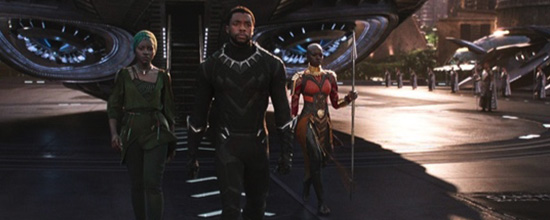
Black Panther might be the first MCU film that could claim to most clearly be an expression of a particular director’s voice. We shouldn’t go so far as to call it auteurist, because it’s still a Disney movie and (perhaps ironically) a part of that monopolizing Empire—i.e., eat the rich—but Black Panther’s action scenes, especially, feel one with Coogler’s oeuvre. Look only to an early scene in a South Korean casino, in which T’Challa (Chadwick Boseman), Okoye (Danai Gurire) and Nakia (Lupita Nyong’o) plan to intercept a deal between Klaue and everyone’s favorite CIA milquetoast, Everett Ross (Martin Freeman, lovable) for a vibranium-filled artifact which Klaue stole from some colonizer-run museum with Killmonger’s help. We’re introduced to Klaue through the surprising spryness of his violence—Andy Serkis, too, freed from mocap, is still an amazing presence, even as a gangster shitbag—and Coogler gets on his wavelength, carving out the geography of the casino in long tracking shots, much like he convinced us to love stained, shitty-seeming Philadelphia gyms in Creed by helping us to comprehend the many crevices and corners of each hole in the wall. When the casino brawl breaks out into the streets, morphing into a death-defying car chase (slow motion thankfully kept to a minimum), we feel as if we know exactly what these characters—and this wonderful director—are capable of. His vision for Wakanda—shot by recent Oscar nominee Rachel Morrison as an Afrofuturist paradise—rightly draws its inspiration from an omnibus of natural sources, just the a casino scene affords Morrison the chance to go full Deakins (James Bond references all over this thing), imagining the world of the MCU as Steven Soderbergh might have scoped out Traffic, developing a fully sensual visual language to define the many locations of this world-hopping adventure without resorting to sterile maps or facile borders. If T’Challa’s whole narrative arc concerns the need for him to realize the importance of bringing Wakandans into a world that probably doesn’t deserve them, then the vastness of that world, the many different kinds of people who populate it, must be felt in all of its ungraspable diversity. —Dom Sinacola
35. Edge of Tomorrow (2014)
Director: Doug Liman
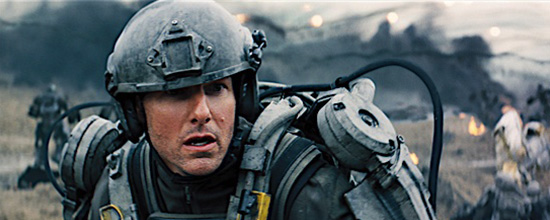
Major William Cage (Tom Cruise) spends his days in the film’s near-future setting spinning the armed forces’ ongoing efforts against a hostile alien race (dubbed Mimics) without ever setting foot on a battlefield. At least until a gruff general (Brendan Gleeson) sends him on a particularly dicey mission. The result is Cage’s death, but the story doesn’t end there. Instead Cage awakes at the beginning of the day he died with his memory intact, and quickly discovers the resurrections will recur every time he dies. His only hope of escaping the endless cycle lies with super-soldier Rita Vrataski (Emily Blunt), who knows from experience exactly how Cage might be able to use this new ability to help humanity win the war of the worlds.
Based on the manga All You Need Is Kill by Hiroshi Sakurazaka and adapted for the screen by Christopher McQuarrie (Cruise’s current go-to director completely in sync with his physically-defying action spectacle) and Jez and John-Henry Butterworth, Edge of Tomorrow recalls other notable time loop sagas, including Groundhog Dayand Source Code in the witty and engaging way it moves its story forward piece by piece. As Cage relives the same day over and over again, he also learns how to become a true soldier, trains with (and falls for) Rita, discovers how the aliens function and ever so patiently formulates the perfect plan of attack. Like a videogame hero with infinite lives, Cage has the opportunity to refine and correct every mistake he makes along the way. However long Cage is on that journey, Edge of Tomorrow is a blast, and Cruise carries the surprisingly amusing action like a pro—his skill with deadpan comedy proving even more valuable than his infamous enthusiasm for sacrificing his flesh over and over and over. —Geoff Berkshire
34. You Were Never Really Here (2018)
Director: Lynne Ramsay

Lynne Ramsay has a reputation for being uncompromising. In industry patois, that means she has a reputation for being “difficult.” Frankly, the word that best describes her is “unrelenting.” Filmmakers as in charge of their aesthetic as Ramsay are rare. Rarer still are filmmakers who wield so much control without leaving a trace of ego on the screen. If you’ve seen any of the three films she made between 1999 and 2011 (Ratcatcher, Morvern Callar, We Need to Talk About Kevin), then you’ve seen her dogged loyalty to her vision in action, whether that vision is haunting, horrific or just plain bizarre. She’s as forceful as she is delicate. Her fourth film, You Were Never Really Here—haunting, horrific and bizarre all at once—is arguably her masterpiece, a film that treads the line delineating violence from tenderness in her body of work. Calling it a revenge movie doesn’t do it justice. It’s more like a sustained scream. You Were Never Really Here’s title is constructed of layers, the first outlining the composure of her protagonist, Joe (Joaquin Phoenix, acting behind a beard that’d make the Robertson clan jealous), a military veteran and former federal agent as blistering in his savagery as in his self-regard. Joe lives his life flitting between past and present, hallucination and reality. Even when he physically occupies a space, he’s confined in his head, reliving horrors encountered in combat, in the field and in his childhood on a non-stop, simultaneous loop. Each of her previous movies captures human collapse in slow motion. You Were Never Really Here is a breakdown shot in hyperdrive, lean, economic, utterly ruthless and made with fiery craftsmanship. Let this be the language we use to characterize her reputation as one of the best filmmakers working today. —Andy Crump
33. Lady Bird (2017)
Director: Greta Gerwig

Before Christine “Lady Bird” McPherson (Saoirse Ronan)—Lady Bird is her given name, as in “[she] gave it to [her]self”—auditions for the school musical, she watches a young man belting the final notes to “Being Alive” from Stephen Sondheim’s Company. A few moments before, while in a car with her mother, she lays her head on the window wistfully and says with a sigh, “I wish I could just live through something.” Stuck in Sacramento, where she thinks there’s nothing to be offered her while paying acute attention to everything her home does have to offer, Lady Bird—and the film, written and directed by Greta Gerwig, that shares her name—has ambivalence running through her veins.
What a perfect match: Stephen Sondheim and Greta Gerwig. Few filmmakers are able to capture the same kind of ambiguity and mixed feelings that involve the refusal to make up one’s mind: look to 35-year-old Bobby impulsively wanting to marry a friend, but never committing to any of his girlfriends, in Company; the “hemming and hawing” of Cinderella on the, ahem, steps of the palace; or Mrs. Lovett’s cause for pause in telling Sweeney her real motives. Lady Bird isn’t as high-concept as many of Sondheim’s works, but there’s a piercing truthfulness to the film, and arguably Gerwig’s work in general, that makes its anxieties and tenderness reverberate in the viewer’s heart with equal frequency. —Kyle Turner
32. John Wick (2014)
Director: Chad Stahelski

The successive chapters of the John Wick (Keanu Reeves) saga have hammered out an ethos not quite there in its first film: Just like any good videogame, each new level must feature increasingly invulnerable, faceless NPCs available to dispatch in increasingly brutal ways, often due to acquiring more and better weapons, as well as a broader understanding of both the geography of the world one must traverse, and the purpose for traversing it. While Chapter 2 opened up the streamlined revenge thriller of the first John Wick to a mythos that aligns with our super-human assassin’s unbelievable abilities, Chapter 3 — Parabellum became an endurance test for our character’s survival, unrelenting and obviously so much more difficult, capped by a boss level that literally involves navigating the floors of a skyscraper to fight harder and harder baddies, including Yayan Ruhian from The Raid in a nod to another video-game-like action series. But John Wick—which economically introduces us to the titular gunman, gives us a reason to care about his pain and then offers up an achingly cinematic way of satisfying that pain—rarely hints at the world outside of John Wick’s vengeance and New York organized crime and the posh murderers’ hotel led by “owner” Winston (Ian McShane). From there, John Wick’s world grows only for him to kill his way through it.
John Wick, then, is something of an homage to John Woo’s pre-Hollywood Hong Kong actioners, The Killer especially. It’s as committed to cheesy melodrama and hokey music and egregiously epic shoot-outs as Woo’s 1989 Chow Yun-fat vehicle, a ruthless killer with a heart of gold at its center just wanting to put his life of crime behind him. But seemingly lost in the thrall of this ever-expanding Wicki-ian universe is the efficiency of Chad Stahelski’s introduction: the grace with which he gives us empirical details about this man’s life, and the brutality with which he takes that life apart—his puppy, a last gift from his dead wife, drags herself to lie next to him in her final moments—is perfectly calibrated to convince us that what John Wick is about to do is right in and of itself. When the mostly silent and stone-faced Reeves explodes much later in the film, his purpose reveals itself: That dog was “an opportunity to grieve unalone,” taken from him. He has nothing left; no good will come from his violent spree, nothing resolved. Still, with his last breath of hope exhausted, all he can do is set out to once and for all murder the world—a world that only exists for John Wick to murder it. We stand up and cheer, because we’re convinced we want that world murdered too. —Dom Sinacola
31. Silence (2016)
Director: Martin Scorsese
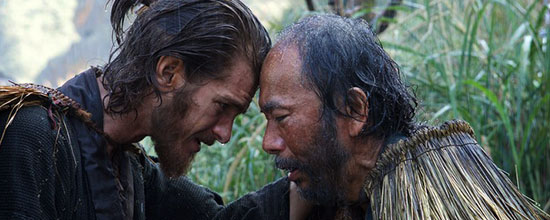
Silence conveys with utter focus of its gestalt one of the greatest narratives that literature’s given us in the past 100 years. Like Endo’s book, the film is both text and subtext of our most difficult and challenging discussions as human beings: on the substance of our beliefs; the substance of our fears; the substance of our aggression and violence and of our seeking to control and/or protect ourselves and our people; the substance of the silence that surrounds all of this and on which we dare to impart meaning.
Silence is a film about the plurality of belief, perspective and experience—-and about how, in the culmination of this plurality, these pieces cancel each other out. When that cancellation happens, one hears what really lies beneath all the barrage of noise: silence. This is not an atheist’s or nihilist’s creed, however; here silence sounds like peace and absolution. A voice speaks in the silence and it could be Jesus or it could be one’s own mind responding to the silence, transformed into the voice of Christ—when Rodrigues (Andrew Garfield) finally hears Christ speak it sounds like a merging of his own voice with that of his mentor, Father Ferreira (Liam Neeson)—because Christ carried the purity of that same silence within. All divisions are melted down to nothing. Selfishness ceases because the self is no longer a thing, or is extant to the self recognized in all others. Perfection is the sound of the black between the stars, absolute and whole. Orthodox Christian thought typically associates God with light, life, being, paradise, the Word. But it would seem that any concept of God—-the supposed source of everything—-that hopes to be cogent has to include in that concept the opposites that compose our reality: darkness, death, negation, oblivion, the non-Word. At the root of the language of the universe and existence is this binary. Perhaps God really is Alpha and Omega.
In an interview with Scorsese, Film Comment noted that Silence is like an “apostate apotheosis.” In his foreword to a recent edition of the book, Scorsese himself mused that Silence was a gospel of Judas, on the surface referring to the weak Kichijiro (Yosuke Kubozuka), a guide for the priests who ends up repeatedly betraying them, but in truth referring to nearly every character in the story, especially Rodrigues. Especially Scorsese himself. It couldn’t be more clear why Scorsese connects with this material the way he does: It describes him and everything his art represents. It is the core of who he is, a believer who believes to the point that he must doubt. Scorsese has stated that his entire life’s work has been about religion and film. This is obvious: If his oeuvre has been a perpetual cycle of profession and denial, sin and confession, damnation and redemption, Silence is the point where the needle drifts off the vinyl. One stands transfixed, watching the record spin, no sound in the air other than incidental noise and the murmur of one’s own breath. —Chad Betz
30. Zama (2017)
Director: Lucrecia Martel
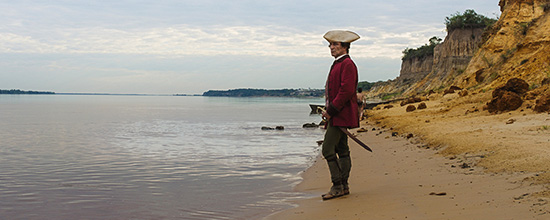
Early in Lucrecia Martel’s Zama, her dreamy intent and languid images begin to nestle into place. First we witness Spanish corregidor (“mayor”) Don Diego de Zama (Daniel Giménez Cacho, whose eyes bear lifetimes of disappointment and resignation) on the shore of a nondescript river, in charge of a desolate Spanish colonial outpost in the middle of nowhere South America, though he seems to be more inhabiting it than litigating its quotidian. Catching a group of native women bathing, he steals a glance but is immediately found out, chased from the beach. Slapping one of the women to assert his dominance, Zama’s violent reaction feels preposterous, the response of a person with no control over himself, or his lot in life. This land rejects this sad man.
Director Lucrecia Martel and cinematographer Rui Poças (whose worked with Miguel Gomes and, recently, with João Pedro Rodrigues on the exquisitely pretty The Ornithologist) dedicate nearly every frame to Zama’s melancholy maundering, though rarely allowing him the dignity to ever be the most interesting figure in any particular shot, that is, when they aren’t up close, searching his lined mug for something representing courage or assertiveness. Stranded in a thankless government job, not so much forgotten by the system as just avoided, Zama is a colonist renounced by both the colonized and colonizers. Zama is literally post-colonial: Colonists negate Diego de Zama’s colonialism by negating him, an equation Martel and Poças externalize by photographing with foreboding beauty the jungle around the pathetic man, reducing him to a meaningless, replaceable figure amidst effortlessly mighty landscapes. “Do you want to live?” Zama’s asked at the end of the film. He doesn’t respond. With her third film, Lucrecia Martel wonders, in wide swathes of unmitigated wilderness and weird, inexplicable poetry, just how far one’s wants can go. Bewitching and masterfully rendered, Zama is an elegant, ravishing, often delightfully strange achievement. It is reportedly the result of an interminable production process, of a difficult and substantial edit, of a novel that resists adaptation. It wants little more than to reach out in all directions, to peer into the void, knowing deep down that the void can’t be bothered to peer back. —Dom Sinacola
29. The Tribe (2015)
Director: Myroslav Slaboshpytskiy
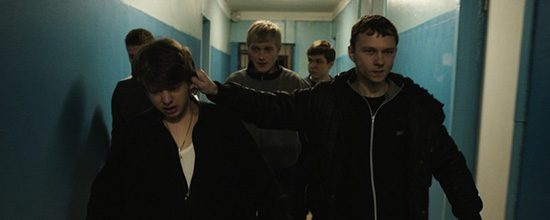
Somewhere between a silent film and a staging of the Stations of the Cross as if by Jacques Tati, The Tribe feels like the primordial beginnings of something spectacular. Which is to say: Ukrainian writer and director Myroslav Slaboshpytskiy has crafted a debut that breathes with preternatural beauty, with a mind for something unspeakably visceral. The Tribe is, in other words, indelible. Full of sadness and stubbornness and a kind of cosmic anger, it seeks abandon through destruction, starting with humanity’s first and best crutch: language.
In an opening title card, The Tribe plainly tells the audience that the film, all in sign language and cast with mostly non-professional actors, will provide no subtitles, spoken dialogue or voice overs. It’s the only bit of handholding Slaboshpytskiy attempts, preparing the audience to pay attention, to figure out the film’s story through gestures and fevered body movements. But if the concession seems strange for a director who’d rather just let the images speak for themselves, the more we become invested in, entranced by, what Slaboshpytskiy shows us, the clearer it becomes that he’s toying with the very nature of what a “foreign film” can—or should—be. In the same way that reading subtitles can often be a distraction from the experience of watching a foreign film, so then is looking for subtitles to read.
And its story is deceptively simple: Sergey (Grigoriy Fesenko), an eager and unquestioning teen with a 10,000-yard stare, transfers to a boarding school for the deaf. There he encounters a world of robbery and prostitution facilitated by a nauseating deal between the oldest students at the school and select members of faculty. At first, due to his brutish strength and emotionless ability to do what he’s told, Sergey acclimates well to life as a tribal thug. Soon, though, he falls in love with Anna (Yana Novikova), one of the school’s two underage women turning tricks at a local truck stop. Love, of course, was never meant to exist in a world such as this, and so, after he’s punished repeatedly for his feelings, Sergey cuts a swathe of chaos through the corrupt campus. He doesn’t so much pull apart its power structure as hasten its descent into annihilation. Similarly, The Tribe only seeks to communicate, as plainly as it can, the desperation of life lived on the fringes, and that it does so without language is The Tribe’s truest success. Gorgeous and guileless, the film will undoubtedly destroy you. The right words are missing. —Dom Sinacola
28. Swiss Army Man (2016)
Directors: The Daniels

Known for the “Turn Down for What” music video, and for the short film (“Interesting Ball”) in which one director is sucked up into the butt of the other director (among other anomalies), and now for the farting boner-corpse movie, Daniel Kwan and Daniel Scheinert are filmmakers in complete mastery of the absurdity at the heart of everything they do. Swiss Army Man, their feature length debut about a man (Paul Dano) who, while stranded on a deserted island, discovers a dead body (Daniel Radcliffe) with extraordinary physical abilities (involving farts and boners), is both a testament to their childish imaginations and a relentlessly creative exploration of mental illness, nostalgia and the ways in which movies define (usually to our detriment) our expectations for love and happiness. Swiss Army Man is cobbled together from Spielbergian hope and Cronenbergian body horror, from the white people romance of Nancy Meyers and the white people fantasy of John Williams’ Jurassic Park score or the melody of “Cotton Eye Joe,” cherished cultural touchstone and so much more mysterious than anyone would ever give it credit for and whatever else the heart desires. It haunts the subconscious; it ends on a note so antithetical to the plot machinations of a rom-com that it both is and isn’t one; it draws logic like ethereal cobwebs from the minds of every viewer to assemble somehow a magnificent tessellation of pop culture and poop joke as emotionally wrenching as it is ridiculous. Assembling somehow the many multilayered voices and neuroses of so many different people with so many different loves. It’s beautiful, and I love it. —Dom Sinacola
27. The Act of Killing (2012); The Look of Silence (2014)
Directors: Joshua Oppenheimer, Christine Cynn
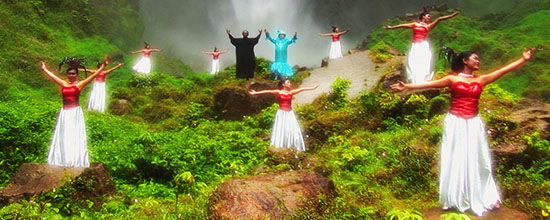
Joshua Oppenheimer’s The Act of Killing focuses on one of the darkest chapters of the 20th century, speaking to some members of the Indonesian death squads who slaughtered hundreds of thousands of their countrymen and women in 1965 and ’66. These people don’t live in the shadows, though—instead they’re treated like royalty in their native land, celebrated as heroes who helped “save” Indonesia from communism. The film is so shocking and depressing that its subjects’ utter disconnection from morality would almost be funny if it wasn’t so frightening. Oppenheimer amplifies those conflicting reactions further by introducing a daring gambit: In the process of interviewing these butchers—who brag about raping and killing their victims (including the occasional beheading)—the director asked if they would be interested in re-creating their murders through fictionalized, filmed scenes. The men—most notably a gentleman named Anwar Congo, who was one of the death squad leaders—leapt at the chance. What follows is a literally nauseous glimpse into the minds of men who have spent decades mentally escaping the inescapable.
And like The Act of Killing, Oppenheimer’s companion film—the syntactically similar The Look of Silence—asks you to contemplate the literal meaning behind its title. Again returning to Indonesia, a country languishing in the anti-communist genocides of the 1960s, Oppenheimer this time sets his eye on Adi, a middle-aged optician whose brother was murdered by the men who were the focus of the first film, people today treated as local celebrities. Without question, the film is an interrogation of what it means to watch—as those who led the genocides; as those who are loved ones of those who led the genocides; as those who must repress the anger and humiliation of living beside such people every day; and, most palpably of all, as those of us who are distant observers, left with little choice but to witness such horror in the abstract. As in its predecessor, Oppenheimer’s patience and ability to acquaint himself intimately with the film’s subjects make for one gut-scraping scene after another—the sight of Adi’s 100+ year-old father, especially, is harrowing: blind and senile, the man is abjectly terrified as he scoots around on the floor, flailing and screaming that he’s trapped, having no idea where, or when, he is. Yet, moreso than in The Act of Killing, Oppenheimer here demands our undivided attention, forcing us to confront his quiet, sad documentary with the notion that seeing is more than believing—to see is to bear responsibility for the lives we watch. —Tim Grierson and Dom Sinacola
26. Mandy (2018)
Director: Panos Cosmatos
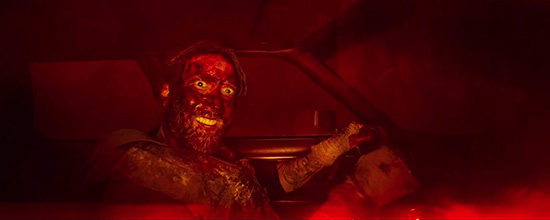
More than an hour in, the film’s title appears, growing lichen-like, sinister and near-illegible, as all great metal album covers are. The name and title card—Mandy—immediately follows a scene in which our hero forges his own Excalibur, a glistening, deformed axe adorned with pointy and vaguely erotic edges and appurtenances, the stuff of H.R. Giger’s wettest dreams. Though Red (Nicolas Cage) could use, and pretty much does use, any weapon at hand to avenge the brutal murder of his titular love (Andrea Riseborough), he still crafts that beautiful abomination as ritual, infusing his quest for revenge with dark talismanic magic, compelled by Bakshi-esque visions of Mandy to do her bidding on the corporeal plane. He relishes the ceremony and succumbs to the rage that will push him to some intensely extreme ends. We know almost nothing about his past before he met Mandy, but we can tell he knows his way around a blunt, deadly object. So begins Red’s unhinged murder spree, phantasmagoric and gloriously violent. A giant bladed dildo, a ludicrously long chainsaw, a hilarious pile of cocaine, the aforementioned spiked LSD, the aforementioned oracular chemist, a tiger, more than one offer of sex—Red encounters each as if it’s the rubble of a waking nightmare, fighting or consuming all of it. Every shot of Mandy reeks of shocking beauty, stylized at times to within an inch of its intelligibility, but endlessly pregnant with creativity and control, euphoria and pain, clarity and honesty and the ineffable sense that director Panos Cosmatos knows exactly how and what he wants to subconsciously imprint into the viewer. Still, Mandy is a revenge movie, and a revenge movie has to satiate the audience’s bloodlust. Cosmatos bathes Red (natch) in gore, every kill hard won and subcutaneously rewarding. There is no other film this year that so effectively feeds off of the audience’s anger, then sublimates it, releasing it without allowing it to go dangerously further. We need this kind of retribution now; we’re all furious with the indifferent unfairness of a world and a life and a society, of a government, that does not care about us. That does not value our lives. Mandy is our revenge movie. Watch it big. Watch it loud. Watch yourself exorcised on screen. —Dom Sinacola
25. Anomalisa (2015)
Directors: Charlie Kaufman, Duke Johnson
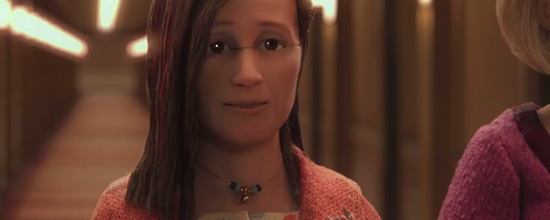
Preciousness and misanthropy have always been the twin hallmarks of Charlie Kaufman’s work, his characters’ misery heightened and sometimes enlivened by the writer-director’s ability to craft clever sci-fi/fantastical scenarios around them. In Kaufman’s hands, life looks heartbreaking, and yet it can often be beautiful at the same time. And his Anomalisa is piercingly poignant, perhaps his most succinct expression of the malaise that’s forever haunting his work. It doesn’t resolve the issues that have eaten at his characters since his first published screenplay, but the movie is life-affirming, not because of any artificial feel-good sentiment, but because it mirrors one’s own mixed feelings about the wonders and horrors of being alive. Plus, it’s really funny.
Anomalisa was co-directed by Duke Johnson, an animator director, and is rendered entirely in stop-motion animation. The fragile, deadpan, handmade quality of the characters serves as a shorthand for the neuroses and sadness that occupy all of Kaufman’s narratives. Once we meet Michael Stone (voiced by David Thewlis), we feel like we know him. A productivity expert, Michael does speaking engagements around the world, his modest notoriety boosted by a successful self-help book he wrote a few years ago. But as he lands in Cincinnati for his next appearance, it’s clear he’s depressed, and not because he’s in Cincinnati. Because Kaufman doesn’t reveal a lot about Michael’s inner world, the character’s actions offer clues into his mindset: He calls a woman in town he knew long ago; he looks for a toy for his kid; he meets Lisa (voiced by Jennifer Jason Leigh) and her friend and coworker (voiced by Tom Noonan, as is everyone who isn’t Michael or Lisa), who have traveled from Akron to see him speak at the conference. Although Lisa is painfully insecure, making self-deprecating jokes about her own lack of sophistication, Michael takes a shine to her.
You’ll laugh during Anomalisa—at its peculiar animation, at its lightly fatalist tone—but the longer it goes along, the more the jokes feel like a thin buffer from the oncoming waves of sadness that consume this film. There is gratefulness to be had for the laughs, but even more for the deep empathy, unpredictability and humanity of such a singular film. —Tim Grierson
24. The Raid: Redemption (2011)
Director: Gareth Evans

When future generations look back upon the beginning of the 21st century and seek a way to understand the claustrophobia and fear that defined so much of our popular media of the time, let them look upon The Raid and pump their fists in the spirit of existential dread. Essentially one extended action set-piece, paced with super-human precision to both incite and then maximally exploit one’s heightened dopamine levels, The Raid leaves no headspace for hesitation—once you’re in, you’re at its mercy, and the film’s only relief awaits at the top of an apartment block ruled by one of Jakarta’s scrappiest, psychopathic-iest crime bosses. The Raid is what martial arts cinema looks like in our young century: bleak, dystopian and hyper-violent. This is the talisman to ward off all thoughts of desensitized audiences, and desensitizing cinema. Only its sequel, The Raid 2: Barendal could redefine “relentless” with as much blatant disregard for the exigencies of preserving one’s flesh. —Dom Sinacola
23. Frances Ha (2012)
Director: Noah Baumbach

In a single gesture from actor/writer/Baumbachian collaborator Greta Gerwig, there is an entire universe. She makes a sort of “trespassing” buzz when Lev (Adam Driver) reaches out to touch her shoulder, then, taking a deep sigh of resignation, her body once tense in obligatory “Am I into this guy?” reservation, she relaxes. They might as well be friends. Nothing really goes the way Frances plans; not when she’s asked to move in with her then-boyfriend at the start, not her prospects as a dancer, not her relationship with her best friend, Sophie (Mickey Sumner). But she’s a dancer, right? Her body awkwardly tries to roll with the punches life throws her way—maybe not with the wherewithal of actually trying to figure out what the next thing should be.
Even as she continually loses stability after effectively losing her constant (Sophie), Frances has an irrepressible exuberance, running all about Chinatown to David Bowie’s “Modern Love,” scouring the Lower East Side for an ATM and hiding her whole body as she serves as university benefactor’s wine pourer/ward. There is a gracefulness to Gerwig’s gangly gracelessness, as if all of her warmth, fear, pain and joy cobbles itself together in beautiful unwieldy movements. It’s in these moments, and in the shared body language between Frances and Sophie, that Baumbach and Gerwig find the tenderest moments in their career. And in digital black and white, the movie shimmers, recalling not just the buoyancy of the French New Wave, but the economic and social uncertainty of young New Yorkers (perhaps of a particular social subset) who want everything—with the heart, body and soul—except to grow up. —Kyle Turner
22. Gone Girl (2014)
Director: David Fincher
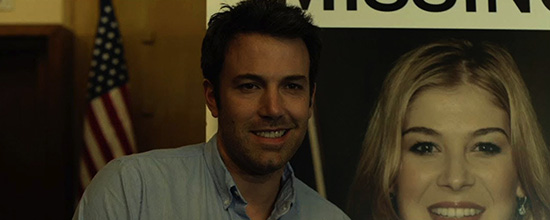
The dissolution of Amy (Rosamund Pike) and Nick Dunne’s (Ben Affleck) marriage was less caused by one particular thing than by a nasty little confluence of circumstance and disillusionment in the tradition itself. No marriage is perfect and all relationships comprise each person’s hard work to chisel themselves into the thing the other will desire. This division of labor is fundamentally unequal, and Amy knows that. It’s with this inequity that she reasserts her power in the relationship in a series of games, part scavenger hunt, part sadistic hide and seek.
A video of a three-year-old Anne Hathaway interview on The Late Late Show with James Corden circulated on Twitter recently, and the clip featured the actress talking about her favorite romantic comedies. She first named Notting Hill to the audience’s approving applause, agreeing the film was a classic of the genre. And then she said Gone Girl. The silence, even in the short video, was deafening. But she’s not wrong. It’s certainly, as she asserts, David Fincher’s kooky idea of a rom-com, but the tropes are there—meet cute, courtship, power struggle—their tone bent, reoriented in the context of a gleefully trashy thriller. The trajectory of Gone Girl is really little different than a screwball comedy or a comedy of remarriage, only if Katherine Hepburn were the leopard in Howard Hawks’ Bringing Up Baby, disenchanted with the man (and maybe the society) onto whom she once projected her fantasies of domestic bliss.
Immaculately executed, with a sense of humor as jaudinced as its eye, and featuring one of the performances of the decade care of Rosamund Pike, Gone Girl is a testament to demented fantasies we create in our relationships, drawn at the expense of our partners’ humanity and even our senses of self. —Kyle Turner
21. It’s Such a Beautiful Day (2012)
Director: Don Hertzfeldt
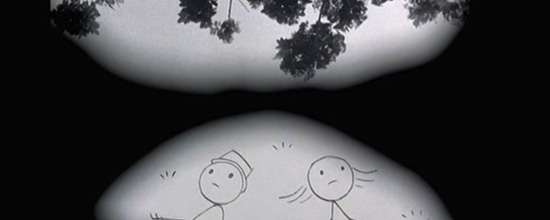
Don Hertzfeldt never felt that Bill, the protagonist of his tremendous animated feature It’s Such a Beautiful Day, had a depressing life, even though he gets diagnosed with a terminal illness. (“It’s the people who drift around wasting their time, weirdly assuming they’re going to live forever, that are the depressing ones, at least to me,” he once said.) Consisting of three shorts, this character study is a culmination of everything Hertzfeldt had achieved to that point—the deceptively simplistic animation, the crushingly soulful musings on life’s futility—while pointing the way to World of Tomorrow, his rightly celebrated (and Oscar-nominated) short about the end of humanity. It’s Such a Beautiful Day combines live-action with animation, and it grows increasingly stranger and more poignant as it rolls along. The title is probably meant to be sarcastic, but Hertzfeldt’s poetry makes it genuine. Yes, life is awful—but once you realize that, it can be kind of amazing. —Tim Grierson
20. The Master (2012)
Director: Paul Thomas Anderson
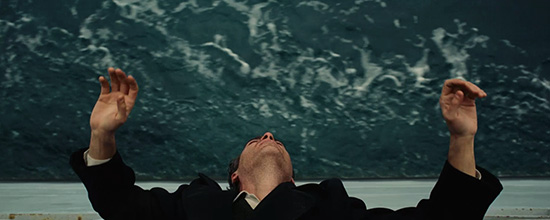
The Master is deeply troubling; you won’t realize why you have such a problem with it until you realize why it is so damn good. At first, it seems a relatively straightforward if unique set-up: Adrift after World War II, Freddie Quell (a primal Joaquin Phoenix) gets sucked into a sort of pseudo-psychological cult led by charismatic Lancaster Dodd (Philip Seymour Hoffman). Amy Adams is also present and also great, of course. The first part of the film is spent relishing in its performances and its craft (luminous 65mm photography and fastidious period detail)—what you’d expect from Paul Thomas Anderson, really—and you’ll find Dodd’s cult suspect and you’ll think you’ll predict the path the story will take. Then you get to the “processing” scenes and realize that you’re not ready for what PTA wants to say: that everything is far more complex and far more simple than we make it to be; that we can never really be what we want; that evolution is pain folded in on itself and multiplied, over and over. As the film progresses you’ll probably find yourself wanting something specific or maybe generously ambiguous from its resolution. Whichever, The Master will absolutely refuse to give you what you want. Instead, it will give you wisdom. Now, wisdom can be a terrible gift—an amorphous yet heavy thing that’s difficult to grasp even as it hurts and burdens, all while offering little hope for practical change. That’s the kind of wisdom that The Master wants to share with you. Yes, terrible, but take it. Take it so that you too can know your master. —Chad Betz
19. Moonrise Kingdom (2012)
Director: Wes Anderson

At the time of making Moonrise Kingdom, after seven features, Wes Anderson became unmistakable: white, upper-middle-class dysfunctional families deadpan wry dialogue amid meticulous mise-en-scène to an eclectic soundtrack. Also: exquisite, often centered, shot compositions; uninterrupted lateral tracking camerawork through dollhouse-like sets; and inserts of quasi-obscure cultural objects. The auteur’s calculated quality persists in this as well, but where his past work could come off as chilly and detached, Moonrise Kingdom exudes a warmth and innocence generated by the earnest adolescent romance at its core. Delightfully in turn, Anderson and co-writer Roman Coppola avoid clichés at every opportunity. The forces that would typically work to tear Sam (Jared Gilman) and Suzy (Kara Hayward) apart instead rally behind them, perhaps infected by the conviction of their love, which never wavers, even in argument: “I love you, but you don’t know what you’re talking about.” As always on an Anderson film, there’s much to be charmed by, but Moonrise Kingdom is precious in the very best sense of the word. —Annlee Ellingson
18. Blade Runner 2049 (2017)
Director: Denis Villeneuve

The debate between what makes something “real” or not has become a staple of adult-minded sci-fi fare in the three-plus decades since Ridley Scott made one genre masterpiece after another dithering over the same debate, but the strength of Blade Runner 2049 is in how intimately Villeneuve (and writers Hampton Fancher and Michael Green) attempt to have us experience this world through the unreal eyes of a Replicant, K (Ryan Gosling). Ideally, we are forced to think about what “humanity” is when empathy—caring for these robots—is the natural result of the filmmakers’ storytelling.
Revisiting Blade Runner, one may realize that there isn’t much of a story there. The same could be said for Dick’s novel, as well as many of his novels: There is breathtaking world-building, impressive use of language and speculative ideas expanded and thought out to thoroughly conceived ends, but our characters are just people existing in this world, and Blade Runner is really just the story of a cop hunting down four dangerous criminals. 2049, despite its heavy themes and heavier exposition, is about a cop who must find a very special robot before the evil mega-corporation does. The brilliance of Blade Runner, and now its sequel, is that the majesty of the imaginations behind them—the sheer sci-fi magnanimity on display—is enough to bind us to these characters. To care about them.
Blade Runner 2049, then, is undoubtedly the most gorgeous thing to come out of a major studio in some time. Roger Deakins has inculcated Jordan Cronenweth’s lived-in sense of a future on the brink of obsolescence, leaning into the overpowering unease that permeates the monolithic Los Angeles Ridley Scott built. The scale of the film is only matched by the constant dread of obscurity—illumination shifts endlessly, dust and smog both magnifying and drowning the sense-shattering corporate edifices and hyper-stylized rooms in which humanity retreats from the moribund natural world they’ve created. There is a massive world, a solar system, orbiting this wretched city—so overblown that San Diego is now a literal giant dump for New L.A.’s garbage—but so much of it lies in shadow and opacity, forever out of reach. What Scott and Cronenweth accomplished with the original film, placing a potboiler within a magnificently conceived alternative reality, Villeneuve and Deakins have respected as they prod at its boundaries. There’s no other way to describe what they’ve done other than to offer faint praise: They get it. —Dom Sinacola
17. The Florida Project (2017)
Director: Sean Baker
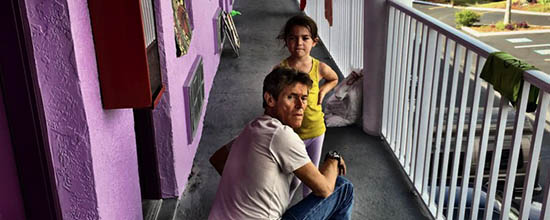
However useful a surreal approach to reframing paradise may be, Sean Baker’s The Florida Project presents a more acute critique. Baker plunges his audience into his worlds through the lens of social realism, his camera on the same playing field as Moonee (Brooklynn Prince), her mother Halley (Bria Vinaite) and the manager of the motel they live in, Bobby (Willem Dafoe). The camera lives with the characters, watches them haul a bed-bug-infested mattress outside, or sit and eat pancakes by a small creek-ish ditch. Nothing climactic happens in these scenes, we just get to watch and not pass judgment—or pass judgment, whatever, it’s up to us. Baker never interferes; the equality of these scenes under the eye of his camera makes his film’s pointed ideas about survival and joy all the more striking.
The film may be buoyed with a sense of humor and, occasionally, wonder, but Halley’s life is framed by an internal struggle over whether humor and wonder can help her retain her autonomy at all in spite of her class status. The Florida Project is spattered with profound sadness, with moments of externalized, violent frustration at presumed helplessness, at practically being born into all this. To what degree you believe Baker to be condescending or patronizing or exploitative is up to you, but the film’s bursts of light, its idea of what caregiving looks like when caregiving is a privilege, is handled with sensitivity. When the film switches from 35mm to digital in its final shots, Baker imbues his camera, now mobile, with freewheeling liberation: No matter what happens after The Florida Project ends, in those last moments, these kids are born to live. —Kyle Turner
16. Certain Women (2016)
Director: Kelly Reichardt
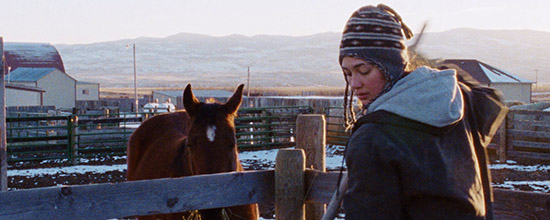
Silence speaks volumes in Kelly Reichardt’s films. In works like Old Joy, Wendy and Lucy and Meek’s Cutoff, she has explored how people spend most of their day thinking, not talking, and that perhaps those quiet moments can be as revealing of character as anything that comes out of their mouths. (And, let’s not forget, even when we speak, we’re rarely saying precisely what we mean.) Reichardt’s less-is-so-much-more approach is again on display beautifully in Certain Women, a series of three barely interconnected stories in which empty spaces are pregnant with meaning and resonance. In the first vignette, a vaguely unsatisfied lawyer named Laura (Laura Dern) must counsel an aggrieved client (Jared Harris) who’s unhappy with the amount of money he’s received in a lawsuit settlement. In the second, Gina (Michelle Williams), a focused wife and mother, is on the search for some limestone for the house she and her disengaged husband (James Le Gros) are building. And finally, a lonely cattle rancher named Jamie (Lily Gladstone) stumbles into a nighttime legal class taught by an out-of-towner (Kristen Stewart), striking up a friendship with the disenfranchised woman. As usual with her films, Certain Women is so delicately but smartly constructed that ecstatic reviews may give people the wrong idea about its greatness. It’s wonderful not because it’s some towering, imposing colossus, but because every small moment feels thoughtfully considered, fully lived-in. Certain Women seeps into the skin and expands in the mind. It leaves you shaken—even though nothing seemingly momentous has happened. Reichardt treats cinema as a kind of meditation, which probably explains why her movies almost never feature traditional endings. Lives are a process, not necessarily a destination, and Reichardt honors her characters’ journey by letting it ebb and flow as it pleases. Like so many of her films, Certain Women is muted and restorative. Suddenly, the real world feels too loud. —Tim Grierson
15. Inside Llewyn Davis (2013)
Directors: Ethan Coen, Joel Coen
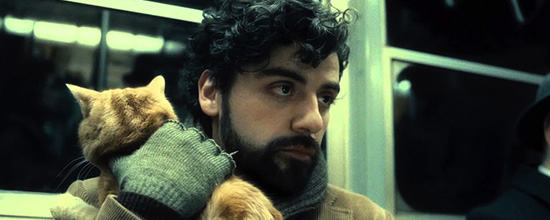
Llewyn Davis (Oscar Isaac) is not a good man; he tells his nephew as much, as if he’s long ago resigned himself to that reality. How long ago isn’t clear—time, when you’re crashing from couch to couch and so relentless in your artistic idealism that your problems become everyone else’s, is malleable. Has a tendency to fall back on itself, to rewind and re-begin. In 1961, Llewyn is a staple in New York’s emerging folk scene, having scored some minor attention for an album he recorded with a former partner, that partner now a success-shaped hole in Lewyn’s life. His solo album isn’t doing so well—hasn’t even been officially released by a label—though Llewyn knows he’s good, perhaps even great, despising any other artist (played by the likes of Justin Timberlake, Adam Driver and Carey Mulligan) not calibrated to his particular standards for what constitutes ethical, incisive music-making. We’re convinced that he’s good too, given long scenes of Isaac fully performing often heart-wrenching songs, Bruno Delbonnel’s camera glimpsing these forgotten images through a soft, muted haze, somehow both romanticizing and judging our memories of what that part of history could have been. Llewyn’s talent hardly matters, though; he’s lost a part of himself that could connect with an audience. If Inside Llewyn Davis is the Coen brothers’ rumination on what it would mean for their partnership to end, it’s a deeply personal confession of vulnerability and fear. If the film is a love letter to a mythologized era that may have never existed, then it is about whether or not Llewyn actually is a good man, whether or not what he represented actually means anything—whether or not he will be remembered as anything more than a Llewyn-shaped hole in the lives of all the people he let down. —Dom Sinacola
14. Uncle Boonmee Who Can Recall His Past Lives (2010)
Director: Apichatpong Weerasethakul

Throughout Uncle Boonmee Who Can Recall His Past Lives, rapture waits. Terminator-eyed monkey spirits hide in the forest, peering at us through the thick of twilight, neutral but territorial; a talking catfish, a reincarnated prince, maybe, performs cunnilingus on a princess, swimming in a shallow pool for lifetimes, holding out until that moment of bestial consummation; Uncle Boonmee (Thanapat Saisaymar), succumbing to kidney disease, knows that when the ghost of his dead wife (Natthakarn Aphaiwon) shows up for dinner, it’s time his journey away from life begins. If the film’s title provides any context, these oneiric images are part of Boonmee’s past wafting back into his consciousness as he prepares for another life; what any of this has to do with Boonmee’s sister-in-law Jen (Jenjira Pongpas) is as much of a mystery to us as it is to her. That is, until Boonmee’s dreams bleed into her waking life, and the borders between worlds blur beyond any clear understanding. In director Apichatpong Weerasethakul’s follow-up, Cemetery of Splendor (2015), Pongpas reprises her role as a woman named Jen who can’t quite convince herself she’s woken from a strange dream; in both films, she wanders gently between reality—loud, ever-modernizing Thailand—and a different reality, where the dead share meals with us. During dinner, because they’re not eating, they ask us how we’re doing. We say we’re doing OK. Weerasethakul finds so much beauty in the silence that follows, during which we don’t ask anything in response. —Dom Sinacola
13. Boyhood (2014)
Director: Richard Linklater

Of all the achievements in Richard Linklater’s career, perhaps what he will be best remembered for is his depiction of time. Dazed and Confused chronicled teenage life with precision, but his Before trilogy showed how the passage of time shapes and changes people in ways that they can’t see, precisely because they’re on the inside, lacking the necessary perspective easily available to us on the outside. With Linklater’s Boyhood, time is examined in a new, incredibly moving way.
As is Linklater’s custom, Boyhood is profound so casually that its weighty themes feel nonchalant, effortless. This movie might make you cry for reasons you can’t quite articulate. You won’t be alone in feeling that way. Because of the ambition of the project and the amount of years it covers (filmed from 2001 to 2013), Boyhood might initially seem underwhelming. By design, Mason’s (Ellar Coltrane) life isn’t particularly momentous, and there are no major revelations or twists. Instead, everything that happens is a matter of gradation—say, for example, how Mason begins to develop an interest in art or how his mother’s partners start to repeat similar patterns of behavior. These moments aren’t commented on—they’re simply observed—and one of Boyhood’s great attributes is its generous spirit. Linklater, who also wrote the script, doesn’t care about indulging in soap opera melodrama because he’s too busy being jazzed by the casual flow of life. There’s enough going on with most people that he doesn’t need to invent incidents.
Without even necessarily intending it, Linklater in Boyhood has fashioned a rather lovely vision of modern America, and it’s telling that Mason’s story starts a year after 9/11. In a sense, the world of Boyhood is the world the rest of us have had to negotiate right along with him. By the time Boyhood ends, 12 real years later, no grand resolutions have occurred. Mason will keep living his life, and so will we. But by observing the everyday with such grace, Linklater allows us the opportunity to do the same. There are few better gifts a filmmaker can give his audience. —Tim Grierson
12. The Wind Rises (2011)
Director: Hayao Miyazaki

Of all of Miyazaki’s most persistent tropes and motifs, there are none more consistently threaded throughout the whole of his body of work than that of the depiction of flight. So it’s no surprise that The Wind Rises, his 11th and final feature film as of this writing, would focus squarely on the life of Japanese aviation engineer Jiro Horikoshi and the complicated legacy of his creations. A story of how a creator cannot control what their work becomes, only the dedication and craft to which they pour into the work itself, The Wind Rises relates not only to the pacifist cultural identity of contemporary Japan but also, on a personal level, to Miyazaki himself. The film is nothing short of Miyazaki’s final artistic testament to humanity’s paradoxical capacity for both the redemptive act of creation and dogged pursuit of self-annihilation. It is in no uncertain terms a conclusion—if not to Miyazaki’s venerable career as one of the undisputed patriarchs of modern Japanese animation, then a thematic coda that ties an elegant knot at the end of his storied career as a director. —Toussaint Egan
11. O.J.: Made in America (2016)
Director: Ezra Edelman
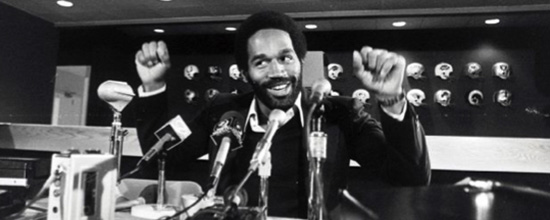
ESPN’s newest installment in its 30 for 30 series is its most ambitious, transcending superficial descriptions such as “entertaining” to get at something deeper, richer, truer. But if you’re conversant with the structure of earlier 30 for 30s, it’s also pleasingly familiar. O.J.: Made in America clocks in at seven-and-three-quarter hours, but it breezes by. The film encapsulates 30 for 30 at its best: It’s endlessly riveting, smartly packaged and exceedingly intelligent. And most important of all, the nearly eight-hour O.J. makes a pretty convincing case to non-sports fans why the rest of us invest so much emotional energy into the exploits of men playing children’s games. Sports are never just sports—they’re an extension of the race and class issues we experience on a daily basis. O.J. Simpson symbolized something powerful in our collective unconscious. And as this movie demonstrates, his fall from grace was partly ours.
It’s engrossing from its first minutes. The expectation might be that the film will focus on Simpson’s mid-1990s murder trial, where he faced charges of killing his ex-wife Nicole Brown Simpson and Ronald Goldman, and while that’s somewhat true, director Ezra Edelman wants to graft a much more profound and overarching narrative around that court case. And so we start at the beginning, the documentary returning to the poor Northern California community where Simpson grew up, quickly fast-forwarding to his first brush with glory and fame as he becomes a celebrated running back at the University of Southern California in the 1960s. 30 for 30 films usually concentrate on one incident—a classic game or playoff series—but not unlike ESPN’s portrait of the 1990s Michigan basketball team, The Fab Five, O.J. aspires to be a comprehensive biography. As such, O.J. is a seductive rise-then-fall narrative that will be familiar to those who know Simpson’s story. And yet, Edelman consistently digs deeper to find the telling societal detail or intriguing character quirk so that we feel like we’re relearning the athlete’s life from a fresh, thoughtfully considered new perspective. It would be inaccurate to say that one walks away from O.J. feeling that its subject was misunderstood or got a bad rap, but Edelman recontextualizes his life so that we see it as a tragedy of his own making. Our complicity in that tragedy is our collective blind worship of celebrities and sensationalism—the movie queasily reminds us about how the trial was a triumph of emotion—as well as our unwillingness to grapple with racial inequality in this country. —Tim Grierson
10. Cameraperson (2016)
Director: Kirsten Johnson
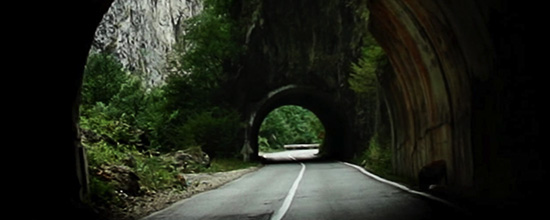
Kirsten Johnson’s title for her latest documentary feature could not be any more nondescript. And yet, the anonymity of that title points to perhaps the most remarkable aspect about this film: its maker’s sheer selflessness, her devotion to her craft and her subjects, her seemingly complete lack of ego. The film is pieced together from outtakes from the long-time documentary filmmaker/cinematographer’s extensive body of work, but beyond occasionally hearing her voice behind the camera (and one shot towards the end in which we finally see her face as she points the camera toward herself), Johnson forgoes the safety net of voiceover narration to tie all this footage together. The footage speaks for itself, and for her.
Which is not to say that the film is just a compilation of clips strung together willy-nilly. Johnson breathes an animating intelligence into Cameraperson’s construction, employing a method that suggests a mind processing one’s life experiences, contemplating the sum total of her work, veering off into tangents whenever she happens upon a piece of footage that triggers broader reflections. Johnson’s film also lightly touches upon questions of documentary ethics. In some of these outtakes, you hear someone—whether her or a director, it’s not always made clear—behind the camera directing interview subjects to address the camera in a certain way, and maneuvering her camera in order to capture a perfect shot. A young one-eyed boy in Afghanistan is encouraged to speak in his native language instead of English, presumably for the sake of authenticity because he appears to know English perfectly well. Elsewhere, Johnson inadvertently puts a taxi driver in Yemen in danger as she angles for a particular shot of a prison. Through such scenes, one may well be able to feel in one’s bones that aestheticizing distance that perhaps all documentarians ultimately have from their subjects. Perhaps that is as it should be within a medium as fraught with ethical minefields as nonfiction filmmaking, and, by extension, journalism. It’s a measure of Johnson’s overall humility that she is willing to be as brutally honest about herself with the viewers in this way—and it’s that humility that ultimately makes Cameraperson such an inspiring experience. —Kenji Fujishima
9. The Lobster (2015)
Director: Yorgos Lanthimos

Greek director Yorgos Lanthimos’s follow-up to international break-out Dogtooth ditches that film’s knotted familial pathology, but refuses to be any less insular. Instead, it expands, even bloats, Dogtooth’s logic as far as it’ll stretch. I know: That doesn’t make much sense, but stay with me—which is exactly how Lanthimos and co-writer Efthymis Filippou assume the audience will approach The Lobster, starting with the familiar, leading man visage of Colin Farrell, gone full dad-bod for a role that is debatably the actor’s best example for his still unheralded genius. With a remarkable dearth of charm, Farrell inhabits David, a man who, upon learning that his wife has cheated on him and so must end their relationship, is legally required to check in to a hotel where he has 45 days to find a new mate, lest he be transformed into an animal of his choosing. David easily settles upon the titular namesake, the lobster, which he explains he picks because of their seemingly-immortal lifespans, the creatures like human ears growing and growing without end until their supposed deaths. At the hotel, David tries his best to warm to a beautifully soul-less woman, knowing his remaining days are numbered, but the depths to which she subjects his resolve eventually encourages him to plan an escape, through which he matriculates into an off-the-grid conglomerate of single folk, led by Léa Seydoux. There, of course, against all rules he has a meet-cute with another outsider (Rachel Weisz) involving elaborately designed sign language (a metaphor maybe, like much in Lanthimos’s world, for the odd ritual of dating), and they fall in love. The world of The Lobster isn’t a dystopian future, more like a sort of mundane, suburban Everywhere in an allegorical alternate universe. Regardless, Lanthimos and Filippou find no pleasure in explaining the foundations of their film, busier building an absurdly funny edifice over which they can drape the tension and anxieties of modern romance. In that sense, The Lobster is an oddly feminist film, obsessed with time and how much pressure that puts on people, especially women, to root down and find someone, no matter the cost. If you’ve ever had a conversation with a significant other concerned about the increasing dangers of becoming pregnant in one’s late 30s, then The Lobster—and its ambiguous but no less arresting final shot—will strike uncomfortably close to the home you’re told you should have by now but probably can’t afford. —Dom Sinacola
8. The Babadook (2014)
Director: Jennifer Kent
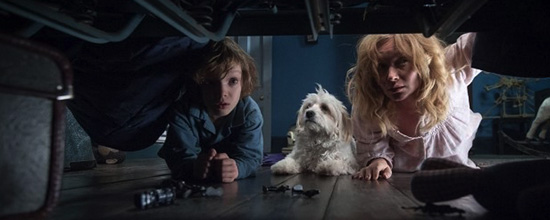
Australian actress-turned-filmmaker Kent has made a movie about childhood, about adulthood, and about the nagging fears that hound us from one period to the next. There’s a monster in the closet—and under the bed, and in the armoire, and in the basement—but the film’s human concerns are emotional in nature. And there’s a fundamental crack in the bond Amelia (Essie Davis) shares with her son Sam (Noah Wiseman), far more insidious than any ill-intentioned specter. The Babadook begins in a dream, where Amelia relives the evening she gave birth to Sam and lost her husband in a grisly car accident en route to the hospital. It’s a cruel twist of fate that has left her shell-shocked and struggling seven years on. She does the best she can to love her boy in the face of tragic circumstances, but Sam’s a handful and Amelia’s exhausted, so you might forgive her if she’s occasionally short on patience.
Then Sam finds a mysterious tome sitting on his shelf—with no explanation as to how it got there, and none needed—called Mister Babadook, a pop-up joint about a creature that menaces sleeping tots. This goes over poorly with Sam, who has an overactive imagination as is—he keeps anti-monster ordinances squirreled away throughout the house. At first Amelia writes off his anxieties as fantasy. But then she begins hearing phantom knocks on the door and bumps in the night; she starts to spot fleeting hints of the Babadook’s form in every glance she casts.
Or does she? The Babadook makes just enough room to breed ambiguity, but Kent isn’t coyly playing with twists and reveals. She’s made a monster movie through and through, filtered through expressionist lenses, its influences worn with pride. Kent takes no false steps, and her sense of self-possession is refreshing. There isn’t a single detail displayed here that isn’t essential to the story. We are very much involved with Amelia’s ordeal, and as things go from bad to worse to petrifying, the visuals envelope us in their impeccable simplicity. The film’s spartan approach to world-building works beautifully, buttressed by a depth of catharsis more than the volume of its frights. Make no mistake, The Babadook is utterly terrifying, but it’s also intimate, touching and, above all else, heartfelt. —Andy Crump
7. Annihilation (2018)
Director: Alex Garland
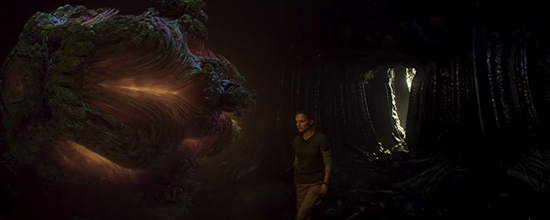
Annihilation is a movie that’s impossible to shake. Like the characters who find themselves both exploring the world of the film and inexplicably trapped by it, you’ll find yourself questioning yourself throughout, wondering whether what you’re watching can possibly be real, whether maybe you’re going a little insane yourself. The film is a near-impossible bank shot by Ex Machina filmmaker Alex Garland, a would-be science fiction actioner that slowly reveals itself to be a mindfuck in just about every possible way, a film that wants you to invest in its universe yet never gives you any terra firma on which to orient yourself, a film hoping you’re as confused and terrified as the characters you’re watching, these characters played by big stars (Natalie Portman, Tessa Thompson, Gina Rodriguez, Jennifer Jason Leigh) backed by a big movie studio, a film that becomes more confusing and disorienting as it goes along. In this, it is unquestionably successful. Garland mesmerizes with his visuals, but he wants you to be off-balance; like the alien (I think?) of his movie, Garland is not a malevolent presence, but simply an observer of this world, one who follows it to every possible permutation, logical or otherwise. It’s difficult to explain Annihilation, which is a large reason for its being. Loss, and regret, and the sensation that the world is constantly crumbling and rearranging all around you every possible second: The world of Annihilation feels familiar, but only at first. Reality is fluid, and ungraspable. A little like our current reality in that way. —Will Leitch
6. Under the Skin (2014)
Director: Jonathan Glazer
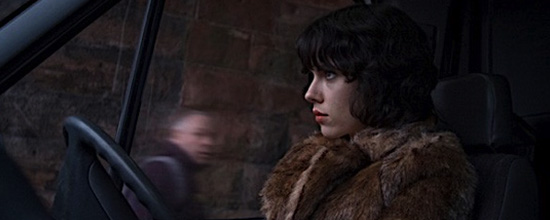
Under the Skin is unified in purpose and in drive. It is a biting examination of sexual politics and a dissertation on the bodies we inhabit—how those bodies create a paradigm of ownership. Scarlett Johansson plays the alien avatar, the predator, the cipher whose weakness is her awakening humanity. When she looks in a mirror, lost in a gaze at her own body, it’s a reminder to us to find some remove from our weary familiarity with ourselves, to think, “Golly, what strange things we are.” The film’s tragic conclusion is an assertion that we achieve some positive ideal of what it is to be human when we accept a state of vulnerability, when we forsake the power position in our sexual communication. When we allow for the reality of our frailty, we can care for the frailty in all around us—and this is a very dangerous thing to do. Especially in a world riddled with corruption and malice that seeks to press its advantage.
Under the Skin shows us these truths with images that are impossibly beautiful, terrifying and ultimately haunting. There is no exposition, only voids in which suspended shells of victims float, only laser sharp lights piercing darkness, only menacingly stoic bikers, only snowflakes falling into lenses. There is a scene on a beach that plays out like a Bergman or Haneke set-piece and is just as heartbreaking as that would entail.
Under the Skin is a soul-crushing work and yet, somehow, the film reiterates that we must continue working towards finding our souls. An artful cascade of multiple exposures of random people, about midway through the film, would seem to symbolize the birth of empathy in Johansson’s femme fatale, and while this is the beginning of the end for her, it can’t help but resonate in Under the Skin with all the radiance of beatitude. These are scenes, statements, questions that are only possible within the framework that the film’s horror aspect provides, for these are not the thought processes bound by what is real, but what could be. —Chad Betz
5. Spider-Man: Into the Spider-Verse (2018)
Directors: Bob Persichetti, Peter Ramsey, Rodney Rothman

there are, rarely, films like Spider-Man: Into the Spider-Verse, where ingredients, execution and imagination all come together in a manner that’s engaging, surprising and, most of all, fun. Directors Bob Persichetti and Peter Ramsey, writer-director Rodney Rothman, and writer Phil Lord have made a film that lives up to all the adjectives one associates with Marvel’s iconic wallcrawler. Amazing. Spectacular. Superior. (Even “Friendly” and “Neighborhood” fit.)
Along the way, Into the Spider-Verse shoulders the immense Spider-Man mythos like it’s a half-empty backpack on its way to providing Miles Morales with one of the most textured, loving origin stories in the superhero genre. It also provides simultaneous master classes in genre filmmaking. Have you been wondering how best to intersperse humor into a storyline crowded with action and heavy emotional arcs? Start here. Do you need to bring together a diverse collection of characters, nimbly move them (together and separately) from setting to setting and band them together in a way that the audience doesn’t question? Take notes. Do you have an outlandish, fantastical concept that you need to communicate to the viewers (and characters) without bogging down the rest of the story? This is one way to do it. Would you like to make an instant contemporary animated classic? Look (and listen).
Ultimately, this particular intensely collaborative endeavor clicks on all cylinders in a manner even the MCU could learn from. As a result, Spider-Man: Into the Spider-Verse vaults into consideration as one the best Spider-Man films ever. —Michael Burgin
4. First Reformed (2017)
Director: Paul Schrader
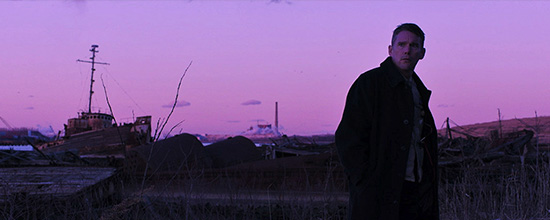
What makes a man start fires? What if that person were a man of God? Paul Schrader has perhaps spent his entire career as a filmmaker attempting to ask that question, to breach the impenetrable truth of whatever that question’s answer could be, beginning with Blue Collar, a story of auto workers and union members in Detroit compromising their values to survive in the shadow of forces too large and too immovable to compromise themselves. With First Reformed, Schrader’s 20th feature as director, that question absorbs the whole film—not through cries of nihilism, as in his previous, garbage Dog Eat Dog, but as a sustained act of faith: What must the devout do for a world God has abandoned?
The question lingers wetly in Ethan Hawke’s eyes as he carries every frame of Schrader’s film. Playing Father Ernst Toller—a minister who in a former life had a wife and a son and a military career, an end brought to all three by that son’s death in Iraq—Hawke has spent the past 20 or so years sublimating the radical tendencies of his iconic slackerdom into a fiercely simmering anxiety, as if the purposelessness of his past malaise has left him stewing on how little he can or could do to change anything in this world.
Not only does First Reformed directly butt heads with Dog Eat Dog, but it indulges melodrama without losing its calm. It works in obvious metaphors not for their own sakes, but as seamless extensions of theme. It’s a gorgeous film, mourning the impossibility of being alive as it celebrates that which binds us, a conscious-rattling, viscera-stirring piece of art. And ultimately, it’s a shocking film, powerful images gripping even more powerful fires within the bodies of those unequipped, as we all are, to put them out. —Dom Sinacola
3. Get Out (2017)
Director: Jordan Peele

Jordan Peele’s a natural behind the camera, but Get Out benefits most from its deceptively trim premise, a simplicity which belies rich thematic depth. Chris (Daniel Kaluuya) and Rose (Allison Williams) go to spend a weekend with her folks in their lavish upstate New York mansion, where they’re throwing the annual Armitage bash with all their friends in attendance. Chris immediately feels out of place; events escalate from there, taking the narrative in a ghastly direction that ultimately ties back to the unsettling sensation of being the “other” in a room full of people who aren’t like you—and never let you forget it. Put indelicately, Get Out is about being black and surrounded by whites who squeeze your biceps without asking, who fetishize you to your face, who analyze your blackness as if it’s a fashion trend. At best Chris’s ordeal is bizarre and dizzying, the kind of thing he might bitterly chuckle about in retrospect. At worst it’s a setup for such macabre developments as are found in the domain of horror. That’s the finest of lines Peele and Get Out walk without stumbling. The film doles out scariness in intervals, treating fright as a supplement to the inexplicable or the downright creepy. It’s an exercise in tension, where we can presume what’s happening in the Armitage household without necessarily being on the money, and that’s the fun of the film: It spaces its revelations carefully, building on each to undercut any hint of a twist, while still catching us off our guard. When we’re exposed to the whole truth of Get Out’s race dynamic, it feels like a gut punch instead of a bombshell. —Andy Crump
2. Moonlight (2016)
Director: Barry Jenkins

What’s remarkable about Barry Jenkins’ Moonlight is that it’s hardly remarkable at all. It’s actually mundane, though its mundanity can be mitigated—or, really, delineated—via qualifiers: buoyant, bitter, graceful, beautiful, harsh, coltish, doleful, vibrant. More to the point: Moonlight is familiar. If you strip away its exterior particulars, you’ll be left with the bones of a coming-of-age story. (And if you’re into fancy European labels, you might call that story a “bildungsroman,” wherein the principal character’s emotional growth is traced over the course of formative years, even decades.) Every film has a skeleton to support its musculature. Moonlight’s just happens to look like Boyhood’s and The 400 Blows’.
Moonlight is painted with brushstrokes of silence: of Jenkins’ unobtrusive direction, of Chiron’s mute trepidation, of his friends and caregivers, who speak to him in the knowledge that he’ll say little and less to them in return (if he says anything at all). But rather than make Moonlight inaccessible, silence opens it up. Jenkins is fluent in silence; it’s in glances that pass between Little and his surrogate custodians, Juan (Mahershala Ali, damn near ubiquitous in 2016 and at his best here) and Teresa (Janelle Monáe), the stillness Chiron (Alex R. Hibbert; Ashton Sanders; Trevante Rhodes) responds with when in conversation with his chum-then-crush, Kevin (Jaden Piner; Jharrel Jerome; Andre Holland) .
Moonlight is nothing if not empathetic. But describing the film solely in terms of empathy is a misguided oversimplification: All movies seek out empathy to degrees, after all, and so Moonlight does what any human story on celluloid has to do. Jenkins opts for sensation in favor of the sensational, eschewing flash and bluster while making old hat feel new again. Most of all, he invites our empathy at the cost of our vanity. He leads us away from navel-gazing to see the stunningly constructed drama he and his troupe have laid before us on screen. The film encourages self-reflection, but not at the expense of either its narrative or the viewing experience. That’s the surest sign of a deft cinematic hand. In turn, this isn’t simply Jenkins’ sophomore effort—it’s the defining pivot of his career. —Andy Crump
1. Mad Max: Fury Road (2015)
Director: George Miller
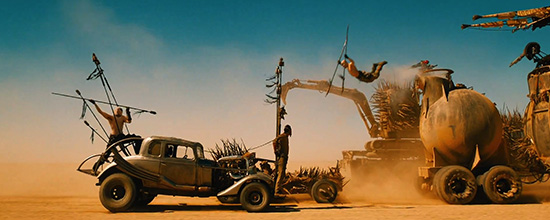
The action in George Miller’s Mad Max: Fury Road is a thing of beauty, poetry, rhythm and detail and momentum. The film is action—it understands the geography, the ballet of it. Excruciatingly, it executes its craft with a lot of real shots of real vehicles and actors and brave, brave stunt players doing mad things for real cameras, which accomplished cinematographer John Seale guides to giddy heights. The unholy crusade of such a venture bleeds gasoline dreams and literal buckets of sweat, and it pours all that into the engine of the film’s final cut, finely tuned by editor Margaret Sixel. Fury Road understands how action itself can be a vehicle that with breathless pace carries forward narrative and character and theme inside of it—its passengers rather than its burden of a load, driven by those things even as it drives them forward—into the realm of the tragic, the mythic and the indelible. What’s that? The rattling, guzzling maw of our mortality and our sentience waging war.
Whimsy, fear, humor and pure visceral ecstasy are ingrained into the images of Fury Road, entwined with its DNA, and everything that happens has an inexorable inertia to its sequence. It is the apotheosis of the old Charlie Chaplin routine or Buster Keaton set-piece (an influence the film doesn’t just speak to in its scene construction but with its rampant shutter speed and frame rate experimentation), driven to its logical conclusion, to the illogic of our shared madness, of wanting to survive then wanting to die then pushing past both of those desires to something even more basic: To move or be moved, to rest and then move again. Fury Road remembers Spielberg’s hey-day with Jaws and Raiders of the Lost Ark. It remembers the Friedkin that made French Connection and that bridge scene from Sorcerer. The Cameron that made Aliens and T2. The Verhoeven that made Robocop and Total Recall. It remembers its own predecessors in the Mad Max films. It remembers when action wasn’t all about: Hey, what can our computers do? It remembers when action was about: Hey, let’s build some crazy contraptions and ask people to do death-defying things and we can give it every last bit of ingenuity that we have; we can grind on against all reason and propriety for the sake of capturing lightning on film and editing that something down into visuals that bark, howl and soar. Let’s make action that renders our stories mortal, that makes our narrative bleed, so that we honor them in our thoughts for days and months and years. Stories of flesh and dirt and metal and gas—elemental stories. Fury Road remembers all of this, is haunted and driven by it, as it looks out over the wasteland to the horizon, and it asks what’s next and how far down does the pedal go, what lies beyond and how furiously can we get there. —Chad Betz
GET PASTE RIGHT IN YOUR INBOX
The best music, movies, TV, books, comedy and more.
-

-

-

-

-

-

-

-

-

-

-

-

-

-

-

-

-

-

-

-

-

-

-

-

-

-

-

-

-

-

-

-

-

-

-

-

-

-

-

-








































